Tags :: Animation

Elio is a space adventure that Toy Story’s Andy would actually enjoy
Pixar’s Elio is the kind of movie that Lightyear should have been.

The Wild Robot (2024)
Watching Chris Sanders’s The Wild Robot, I felt things I haven’t felt in a very long time watching a Hollywood animated movie outside the Spider-Verse: wonder, discovery, joy.
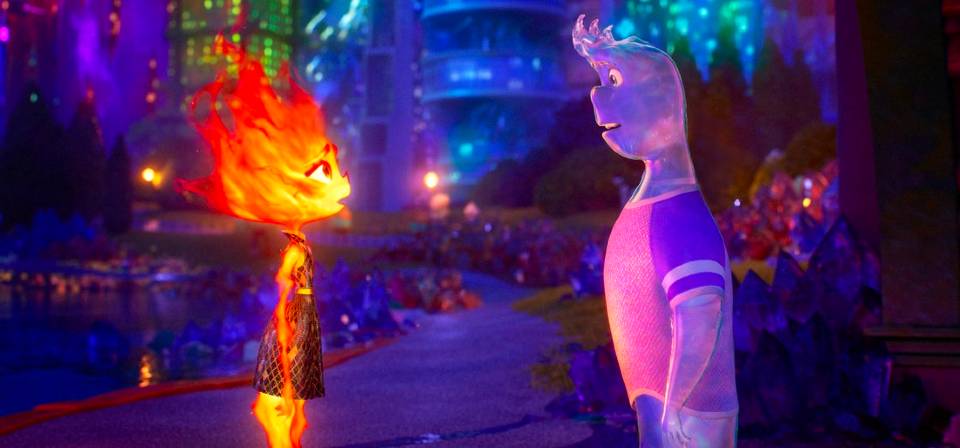
An Elemental misstep: Does Pixar still need — or benefit from — anthropomorphic fantasy?
What if the four elements had feelings? Pixar filmmaker Peter Sohn’s gentle, compassionate storytelling may have something to offer family audiences … if he can break away from what has become a rut in Pixar thinking.
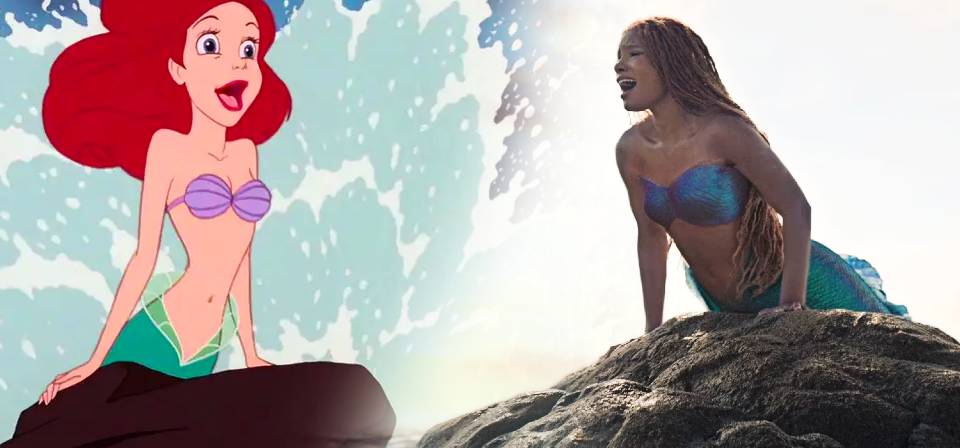
A deep dive: The Little Mermaid then and now
There’s something profoundly melancholy about Disney returning, in its present state of creative exhaustion and corporate decadence, to The Little Mermaid — the nucleus from which the entire Disney renaissance exploded, in a way along with everything that has followed.
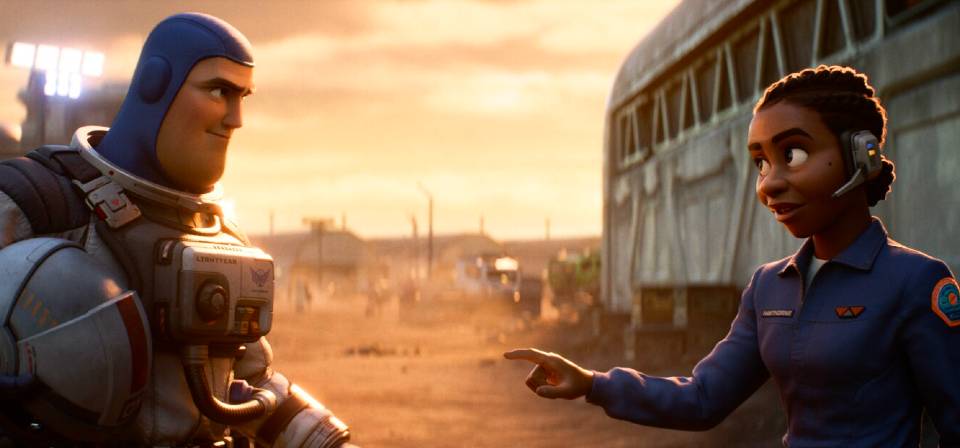
Lightyear is an anti–space opera for an anti-heroic age
It pains me to say this: If Lightyear is Andy’s Star Wars, what an impoverished childhood Andy had.
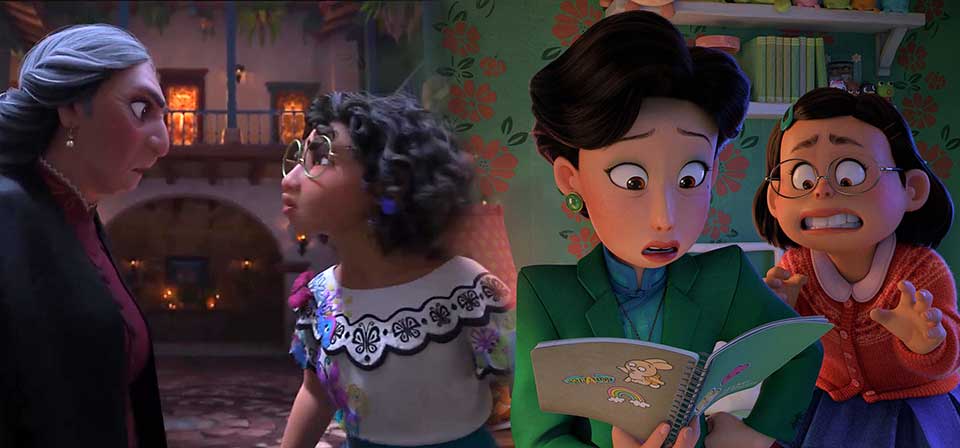
Mother knows best: Turning Red, Encanto, and Disney/Pixar’s new overbearing moms
The familiar animation trope of the domineering dad and the (sometimes) supportive mom gets an update in recent films from the Mouse House.
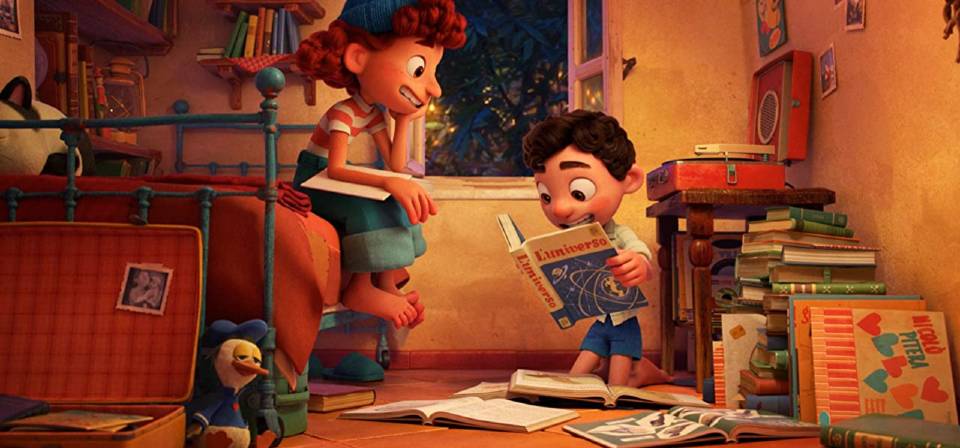
Luca (2021)
In Pixar’s Luca, a gentle, overtly Miyazaki-esque coming-of-age period piece struggles under the heavy weight of iron-clad Disney/Pixar formula requirements and story beats. The charming elements work well enough to carry the film, but only just.
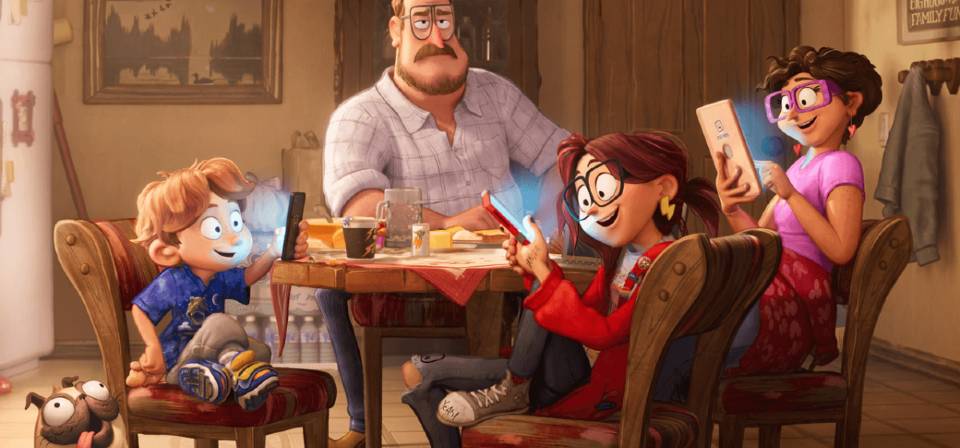
The Mitchells vs. the Machines (2021)
In some ways The Mitchells vs. the Machines harks back to Cloudy With a Chance of Meatballs. Most obviously, it’s another goofy, rollicking techno-apocalypse centered on a bumpy parent-child relationship between an awkward, gifted youngster and a handy but technophobic dad.
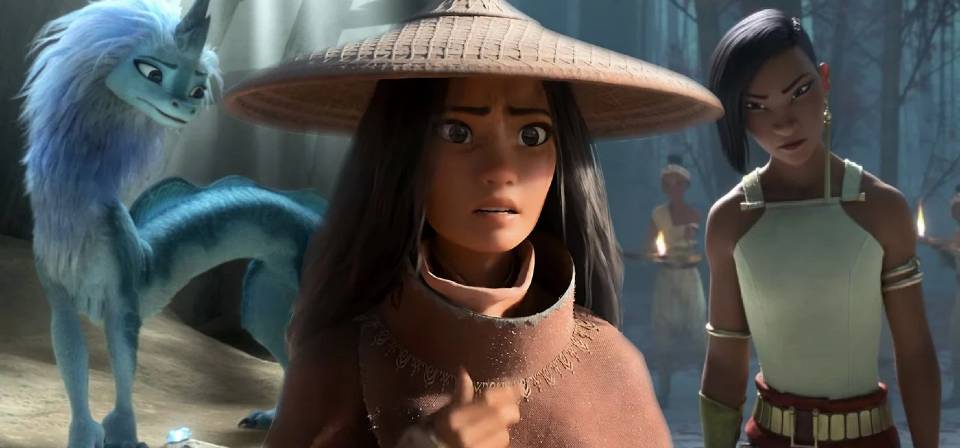
Raya and the Last Dragon (2021)
If Disney’s Raya and the Last Dragon seems familiar, that might be because … well, because of echoes of a lot of things, really.
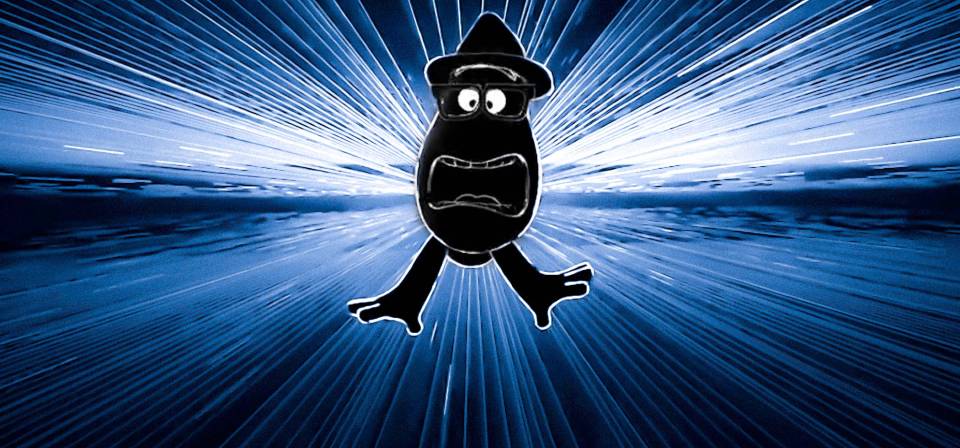
Soul (2020)
Pete Docter’s Soul is Pixar’s third straight original feature, following Coco and Onward, that is explicitly about death, finality, and, in some way, what lies beyond.

Onward (2020)
Pixar’s movies tend to play as metaphors for the creative rise and fall of Pixar itself. When someone says “Maybe this place isn’t as adventurous as it used to be,” it’s hard not to hear an echo of the filmmakers’ voices.
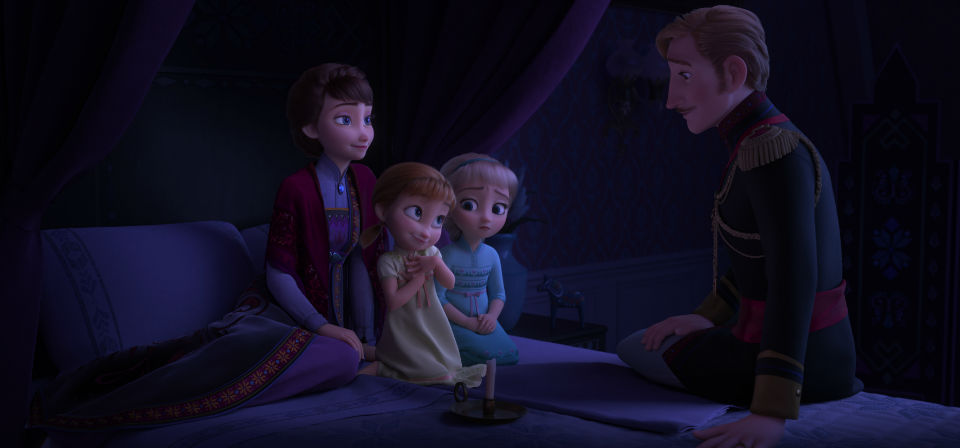
Frozen II (2019)
Anna and Elsa’s relationship is a major improvement on the first film, but in almost every other way this sequel is lost in the woods.
![Toy Story 4 [video]](/uploads/articles/toystory4-vid.jpeg)
Toy Story 4 [video] (2019)
For the first time, Pixar has made a Toy Story movie that adds nothing essential to the arc of the previous films. It’s still worth seeing.
![The Secret Life of Pets 2 [video]](/uploads/articles/secretlifeofpets2.jpeg)
The Secret Life of Pets 2 [video] (2019)
It’s come to the point where the mere sight of the Illumination logo makes me think “lazy and scattershot.”
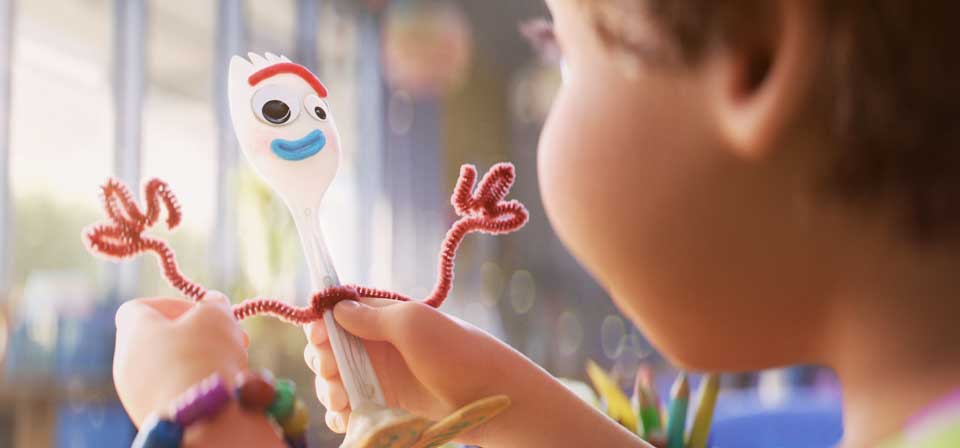
Toy Story 4 (2019)
Toy Story 4 does not continue the story of the first three films, but casts about for new things to do in this world with the sprawling cast of characters in Bonnie’s orbit, most of whom once revolved around the now-absent figure of Andy.
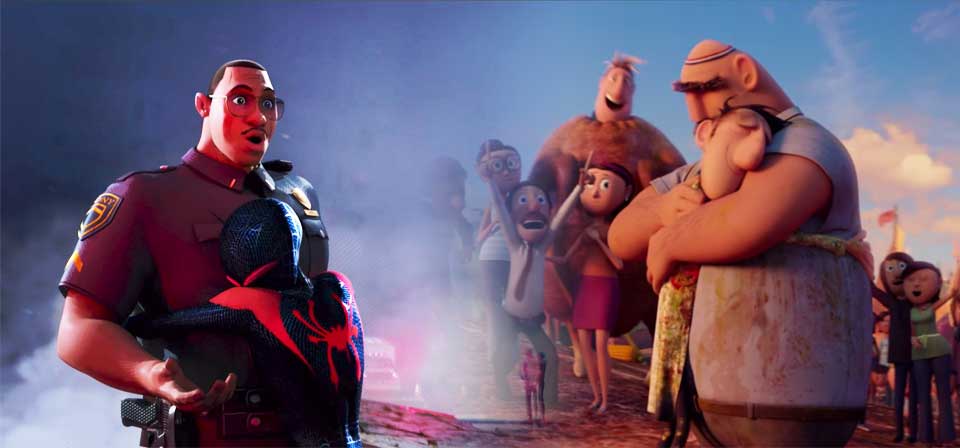
Fathers know best? Phil Lord and Chris Miller’s surprising animated dads
Particularly striking to me, and even moving, is a theme connecting Cloudy With a Chance of Meatballs and Spider-Man: Into the Spider-Verse (though not The Lego Movie): how themes of father–son conflict ubiquitous in other cartoons play out with unexpectedly insightful, consequential fathers.
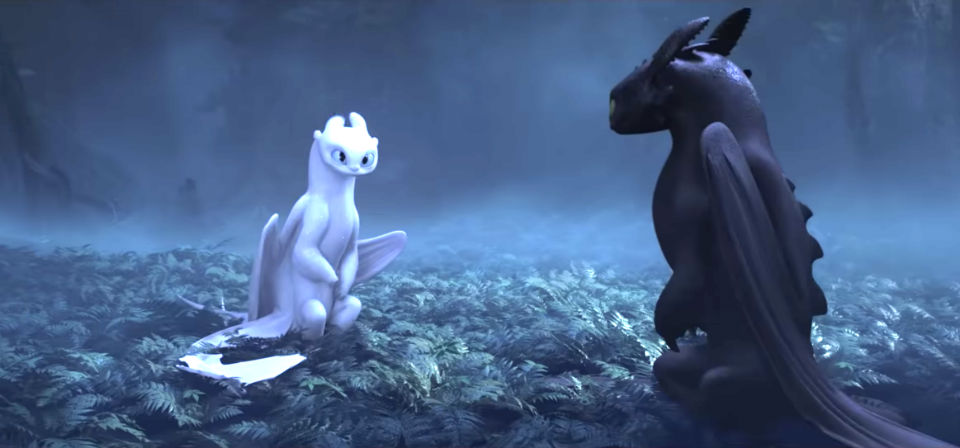
How to Train Your Dragon: The Hidden World (2019)
The two sequels greatly expand the world and the mythology of the original Dragon. Yet our hero’s personal self-development was pretty much complete at the start of Dragon 2.
![Spider-Man: Into the Spider-Verse [video]](/uploads/articles/spiderman-into-the-spider-verse-vid.jpg)
Spider-Man: Into the Spider-Verse [video] (2018)
Chris Miller and Phil Lord, Chris Miller and Phil Lord / Do whatever Chris Miller and Phil Lord do.
Can they swing from a thread? / No they can’t, they’re Hollywood filmmakers.
![Ralph Breaks the Internet [video]](/uploads/articles/ralphbreakstheinternet-vid.jpeg)
Ralph Breaks the Internet [video] (2018)
Ralph doesn’t just break the Internet — he breaks the mold for Disney/Pixar sequels.
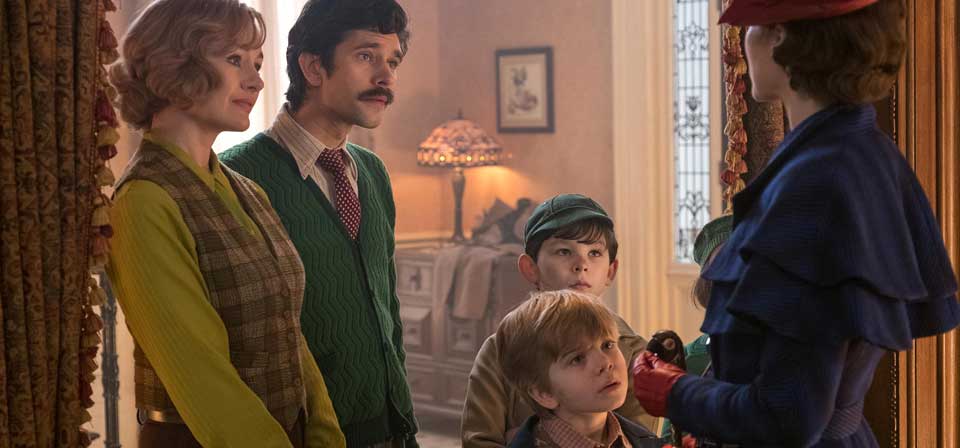
Mary Poppins Returns (2018)
Nostalgia for the original pervades virtually every aspect of the new film, from the production design of Cherry Tree Lane, where Emily Blunt’s Mary Poppins arrives to look after the next generation of Banks children, to the beat-for-beat exactness with which the sequel follows the original.
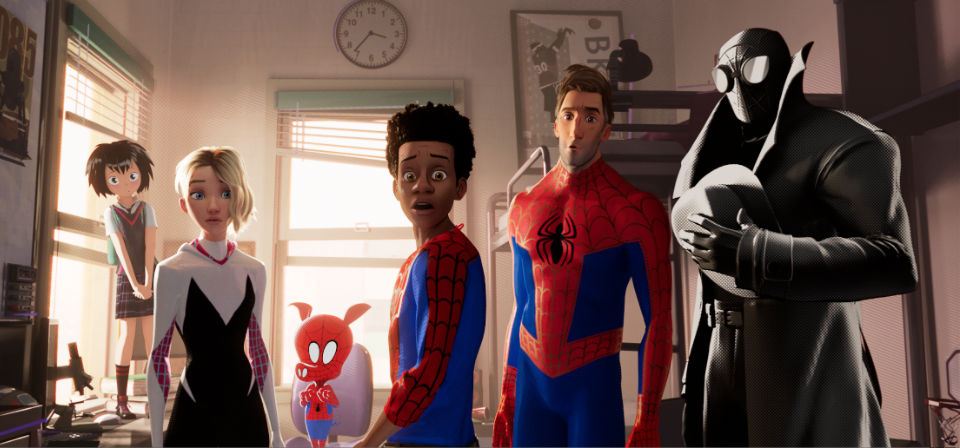
Spider-Man: Into the Spider-Verse (2018)
Here, at last, is the Spidey that family audiences need and the Spidey they deserve — and that’s just two of them!
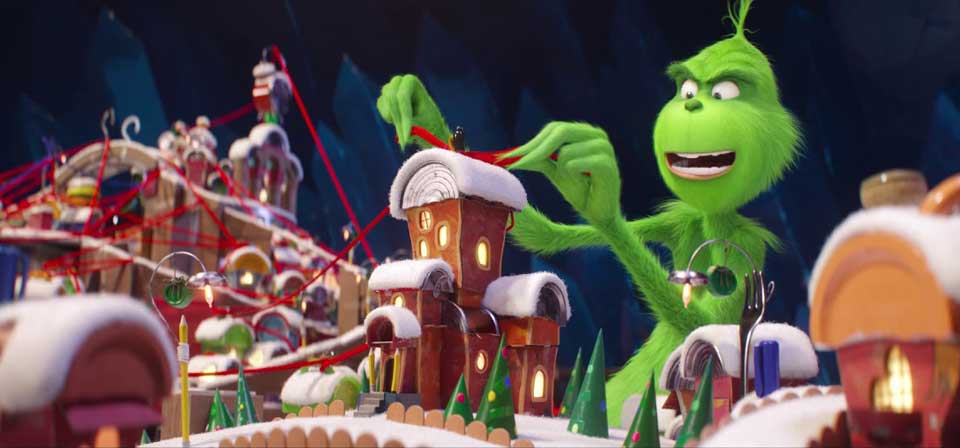
The Grinch (2018)
Replacing Karloff-ian malice and spite / Cumberbatch-ian grousing makes this one Grinch-lite. / It’s a kinder and gentler tale than we’ve seen / Of course he’s not nice, but this Grinch is less mean.
![Teen Titans Go! To the Movies [video]](/uploads/articles/teentitansgo.jpeg)
Teen Titans Go! To the Movies [video] (2018)
The superhero movie to end all superhero movies? Or every superhero movie at once?
![Hotel Transylvania 3: Summer Vacation [video]](/uploads/articles/hoteltransylvania3-vid.jpg)
Hotel Transylvania 3: Summer Vacation [video] (2018)
Clearly I am not a vampire. As you can see here, I’ve changed quite a bit in the last six years … not necessarily in my opinion of this franchise.
![Incredibles 2 [video]](/uploads/articles/incredibles2-vid.jpg)
Incredibles 2 [video] (2018)
I dared to hope this one would be more than merely good. I was afraid it would be less than good.
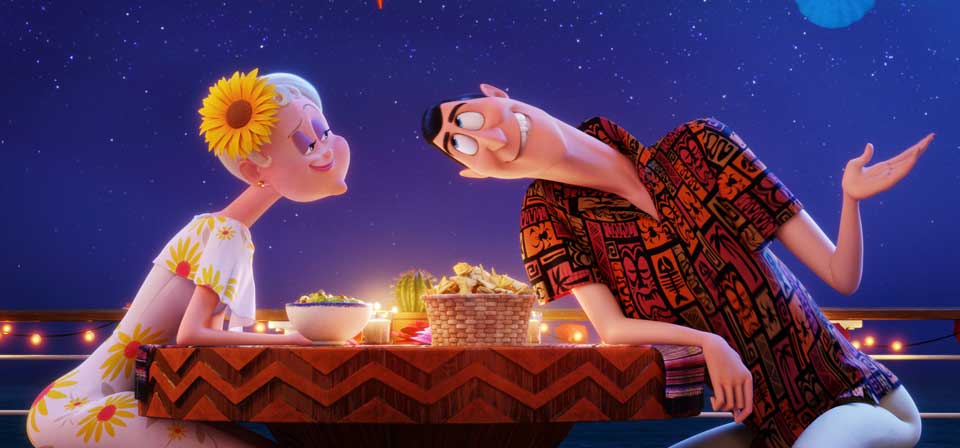
Hotel Transylvania 3: Summer Vacation (2018)
I’m not thrilled about the lack of worthy romantic leading men in recent Hollywood animation, but I prefer the theme in Frozen, about needing to get to know someone before deciding to get married, to this series’ magical, inexorable “Zing” moment.
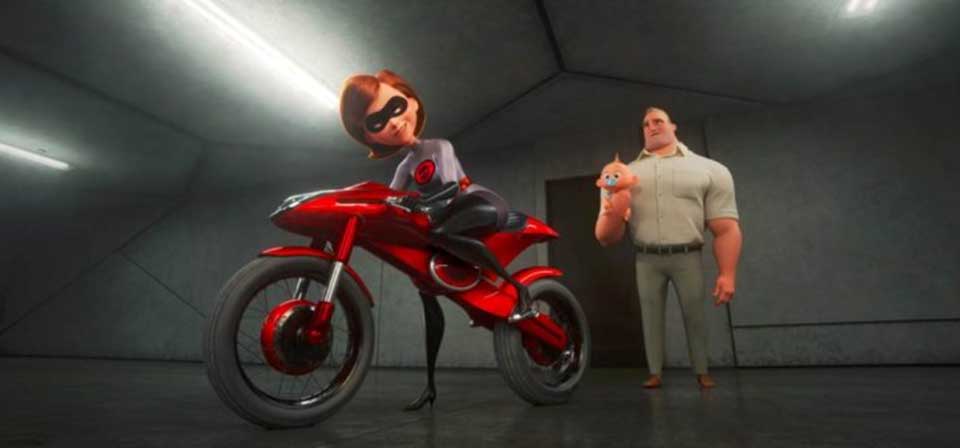
Incredibles 2 (2018)
As The Incredibles in its day towered over the Hollywood animation landscape of the last decade, so in some measure does Incredibles 2 in this decade — but what a different and diminished landscape it is today.
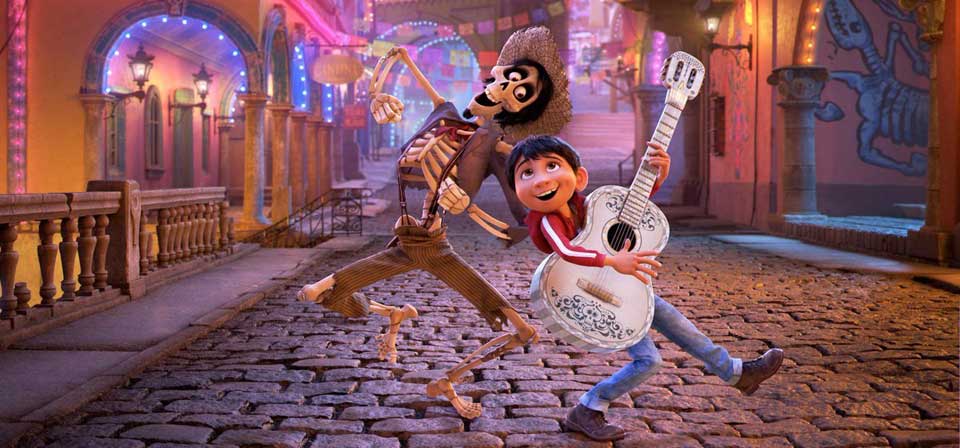
Coco (2017)
I’m tempted to say I’d like to see the version of Coco Pixar would have made 10 years ago. Not really, I guess, since then we wouldn’t have Ratatouille. Still, I can’t help wondering what the team that made Ratatouille might have done with Coco.
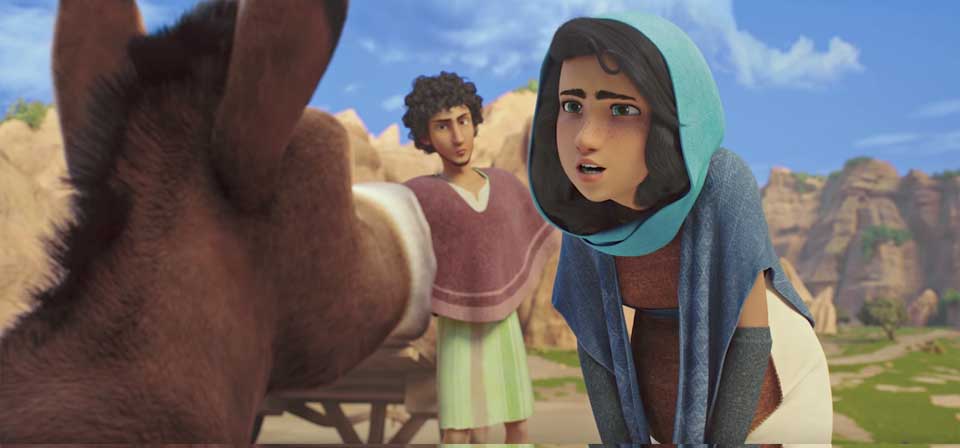
The Star (2017)
It’s a little like The Nativity Story meets The Secret Life of Pets, which probably sounds like a winning formula to some people.
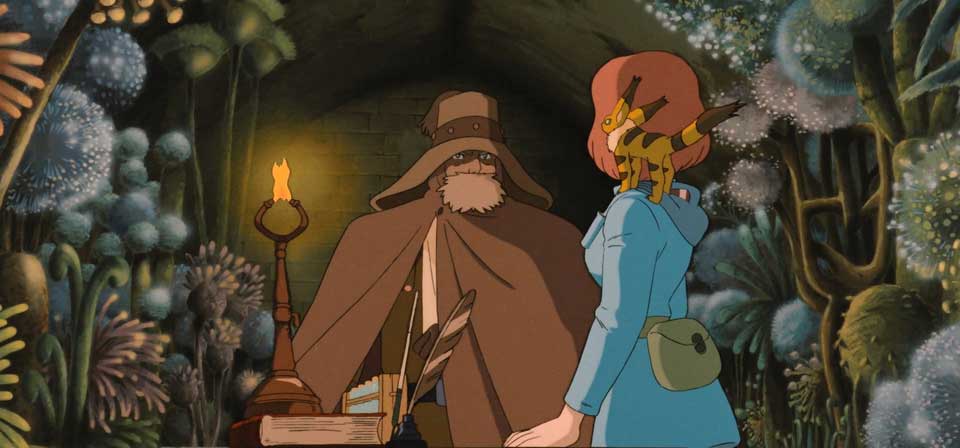
Nausicaä of the Valley of the Wind (1984)
(Reviewed by Sarah E. Greydanus) Nausicaä of the Valley of the Wind may be the quintessential Hayao Miyazaki film — not necessarily his best, but the most comprehensive assortment of his characteristic themes and motifs.
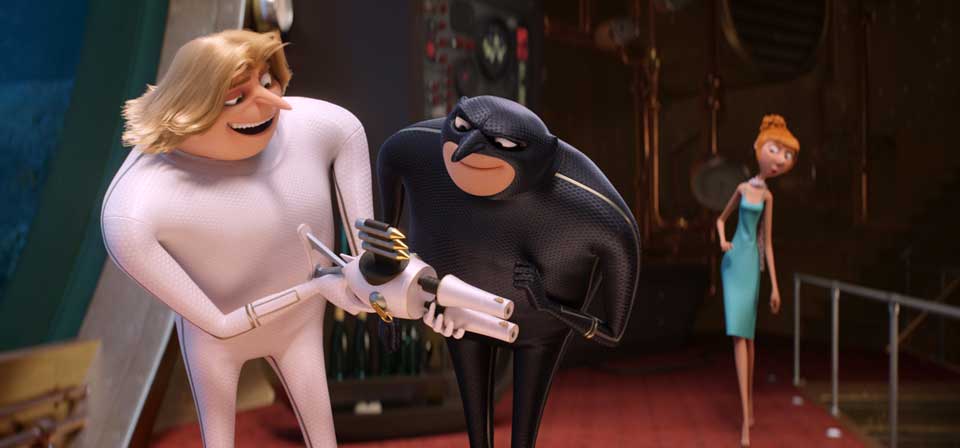
Despicable Me 3 (2017)
To call Despicable Me 3 desperate would be to ascribe too much effort and passion to the thing. Ice Age: Collision Course, now: There was a properly desperate sequel.

Cars 3 (2017)
At this point it seems like too much to hope for that any Pixar sequel, let alone a Cars sequel, should function smoothly from start to finish, but at least it ends well.
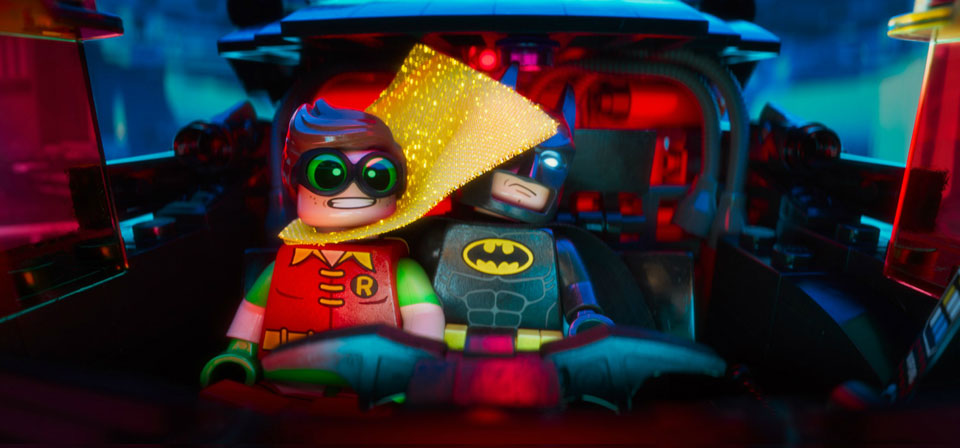
The Lego Batman Movie (2017)
Despite the villainous full-court press, Batman’s victory is so assured that no one is even worried about it. Clearly, something subversive has to happen to kick things out of superhero-movie business as usual and challenge Batman to his core. Would you believe … a giant swirling energy portal in the sky?
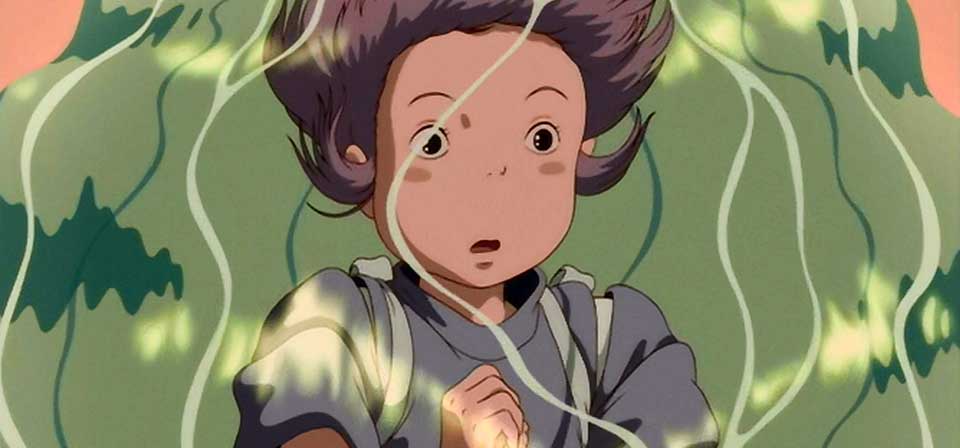
Spirited Away (2001)
No film in Miyazaki’s oeuvre haunts me like Spirited Away. One reason is the evocation of a seemingly impenetrable, incalculable world with rhythms and rituals that seem all the more opaque and unnerving because they are routine and transparent to those that are of that world.
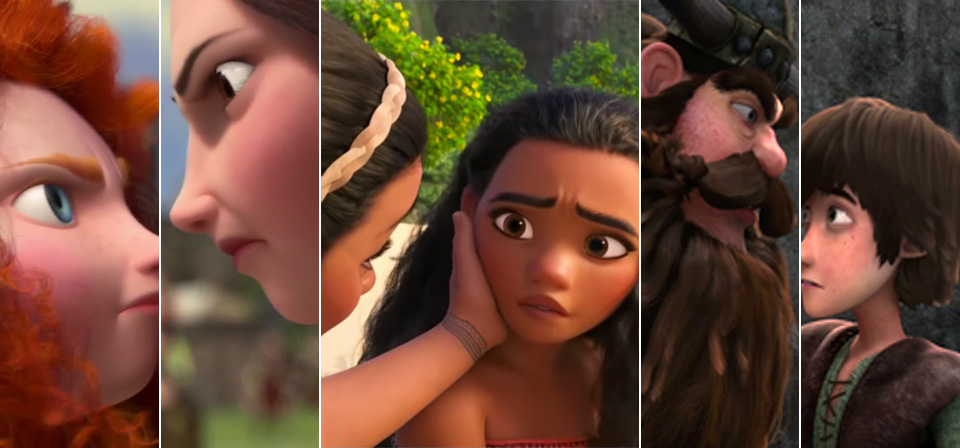
Junior Knows Best: We need to talk about cartoon parents
I don’t expect animated heroes to have uniformly ideal, harmonious family lives. It’s not realistic — and it doesn’t make for good drama, which needs conflict. The ubiquity of the pattern, though, is striking.
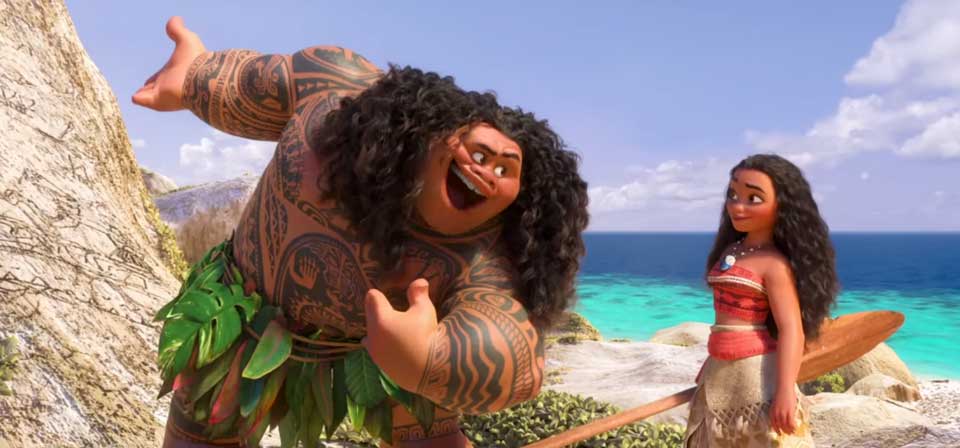
Moana (2016)
It would be going too far to say that Moana combines everything I enjoy about contemporary Disney with everything I dislike, but it’s got quite a bit of both.
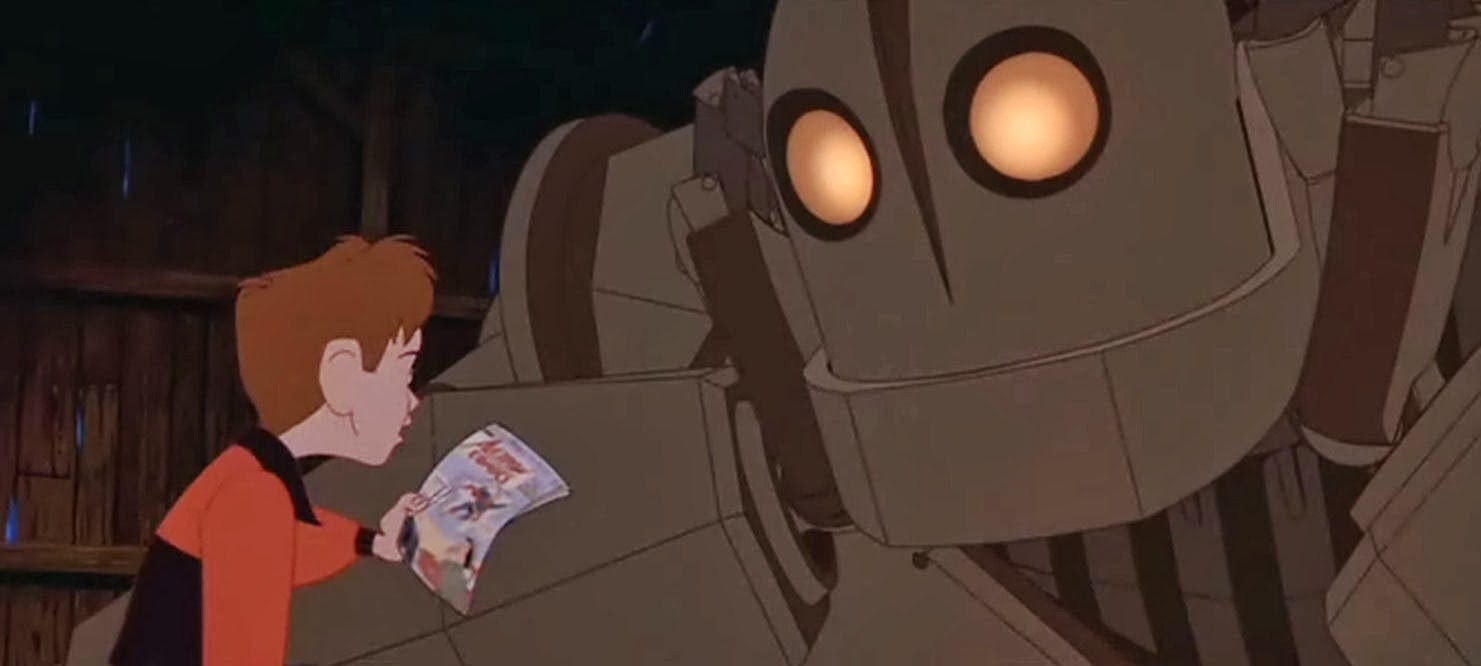
The Iron Giant (1999)
There is a purity to Brad Bird’s directorial debut The Iron Giant, based on the British poet Ted Hughes’ children’s novel The Iron Man, that is inconceivable in the family film landscape of today.
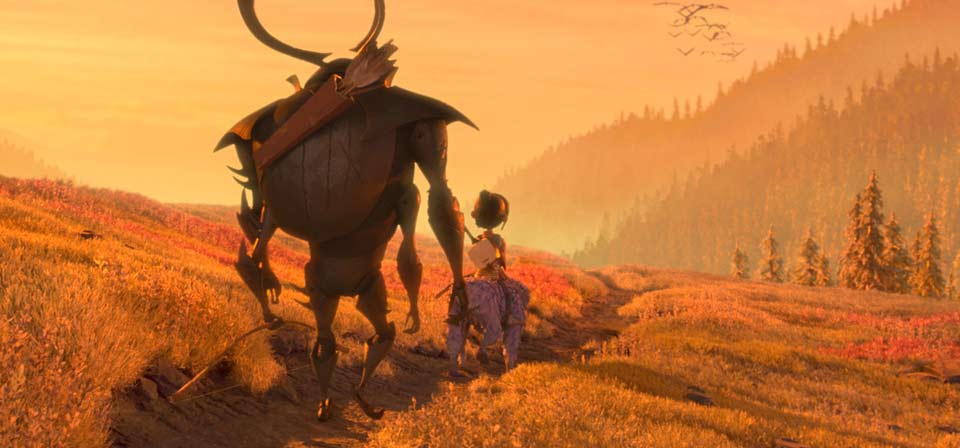
Kubo and the Two Strings (2016)
Kubo and the Two Strings comes close to being a masterpiece, and one of the two best American animated films in years, the other being Pixar’s Inside Out.
![Ice Age: Collision Course [video]](/uploads/articles/iceage5.jpg)
Ice Age: Collision Course [video]
The tipping point has been reached where I now wish that even the original Ice Age had never been made in the first place. Yes, even if it means no Scratt ever.
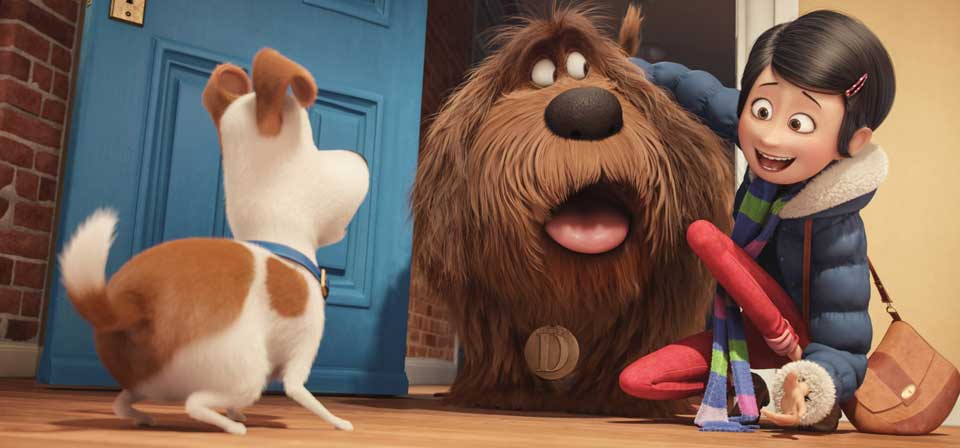
The Secret Life of Pets (2016)
The first act of The Secret Life of Pets leans on a style of humor that we might call “anthropomorphic observational comedy.”
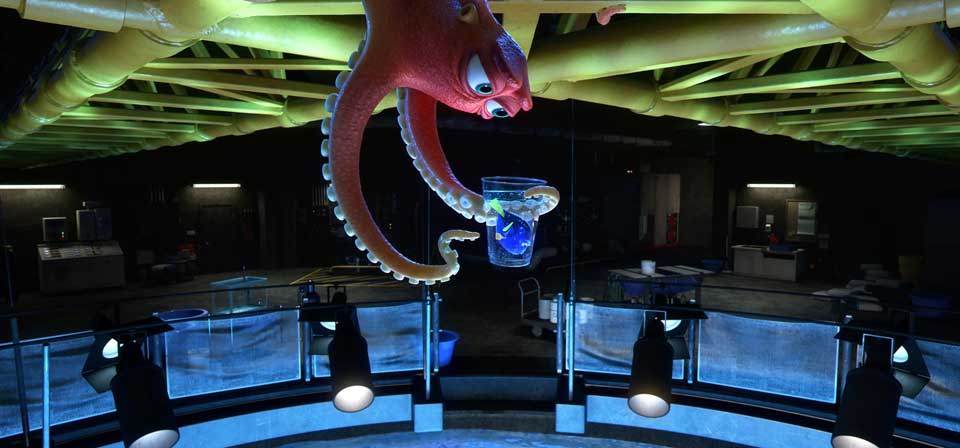
Finding Dory (2016)
Hank the octopus is a particular standout. Hank’s squash-and-stretch movements push computer animation to yet another high-water mark, and his mad skills are highly entertaining — so entertaining, in fact, that I kind of wish the movie had been about him.
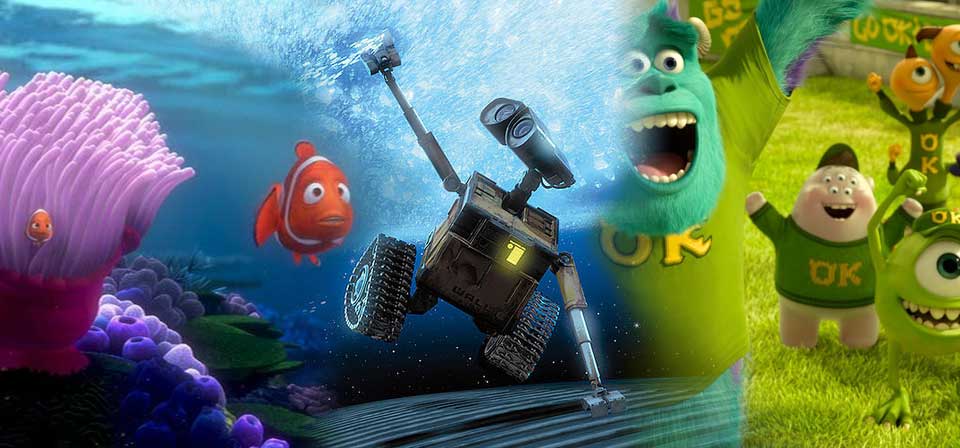
Three ages of Pixar
For 15 astonishing years, from 1995 to 2009, Pixar created a body of work — 10 films — so revolutionary and beyond mainstream Hollywood animation that it’s hard to quantify … In recent years, alas, Pixar has stumbled more often than not.
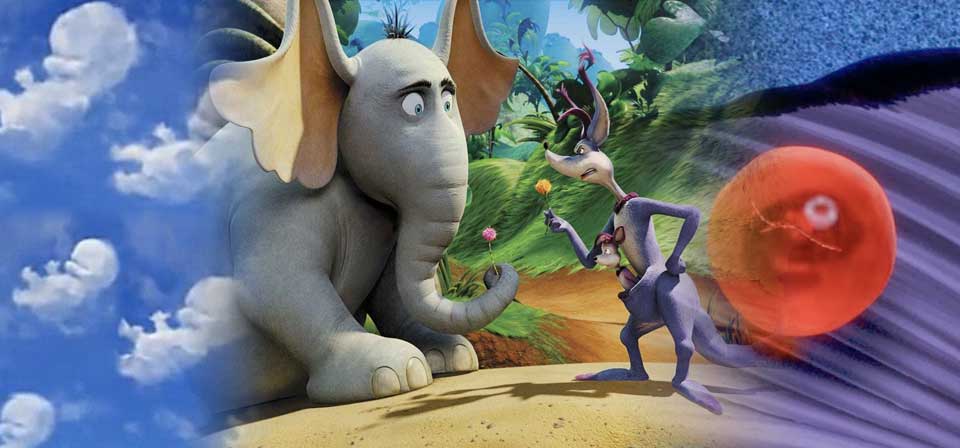
“A person’s a person”: Animation and the cultures of life and death
Clearly Horton can be called a “pro-life” hero in a broad sense, and even in a sense that resonates in some striking ways with the pro-life cause. And his isn’t the only animated adventure with pro-life resonances.
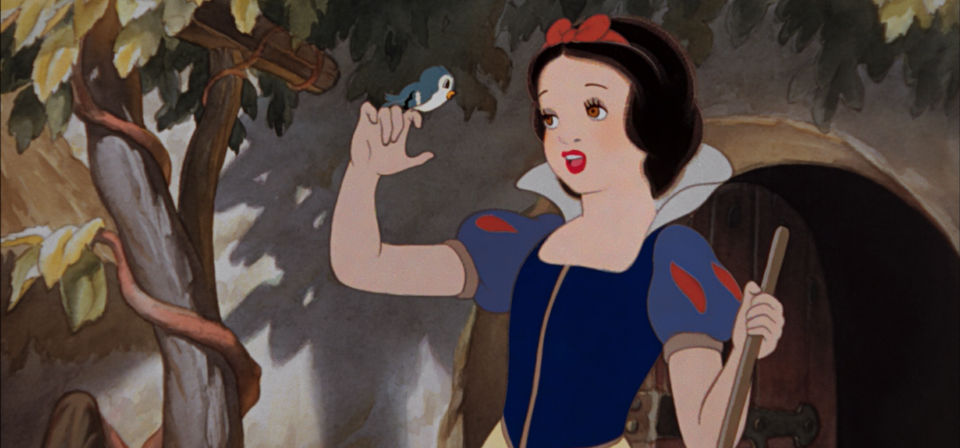
The fairest of them all
23 years ago I had the privilege of catching Walt Disney’s Snow White and the Seven Dwarfs in theatrical re-release. At the time I was acutely aware what a privilege it was, because about five years earlier, in a history of animation class at the School of Visual Arts, I had written a research paper about that very film, and in those days there was no easy way for me to actually watch the film I was writing about!
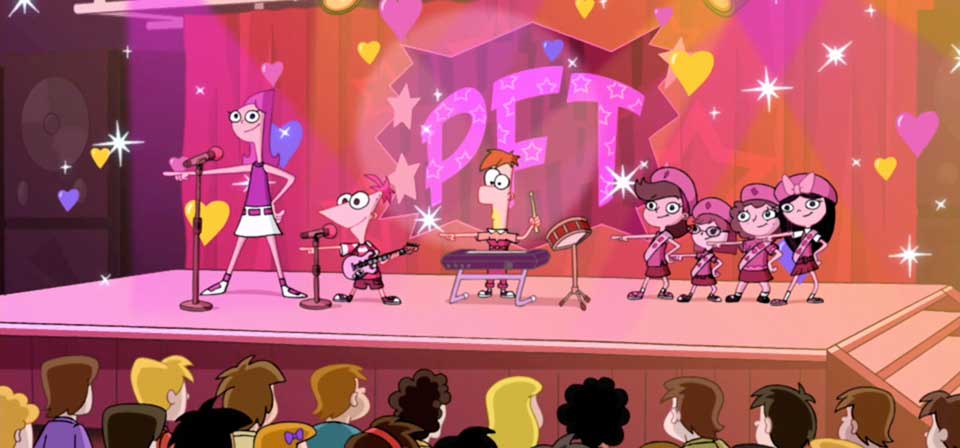
The subversive non-subversiveness of “Phineas and Ferb”
There are at least a half dozen reasons “Phineas and Ferb” never should have existed, and how fortunate for viewers of all ages that it does.
![The Good Dinosaur [video]](/uploads/articles/good-dino.jpg)
The Good Dinosaur [video] (2015)
According to Paul Valéry, art is “never finished, only abandoned.” Maybe so, but this is the first Pixar movie that really glaringly illustrates the point.
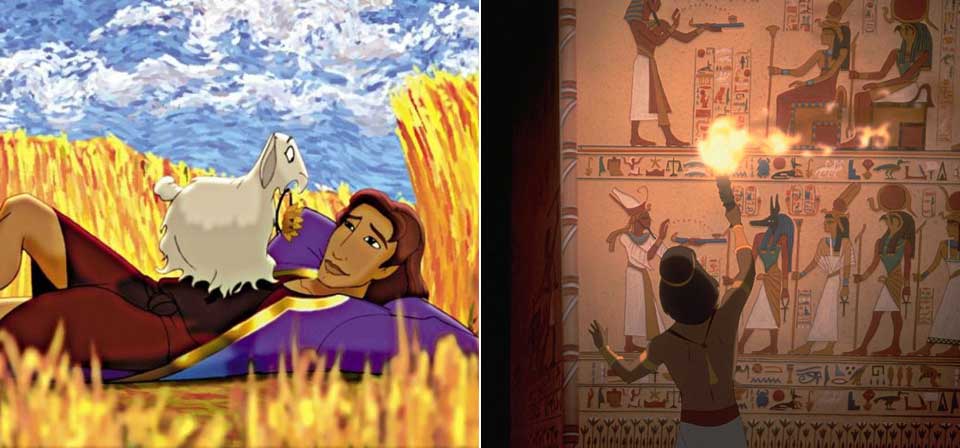
DreamWorks’ animated Torah
During the second week of Advent, as we’re wrapping up Genesis and turning to Exodus, our family viewing often includes DreamWorks’ two animated Pentateuch movies: the Exodus movie The Prince of Egypt and its made-for-TV prequel, Joseph: King of Dreams.
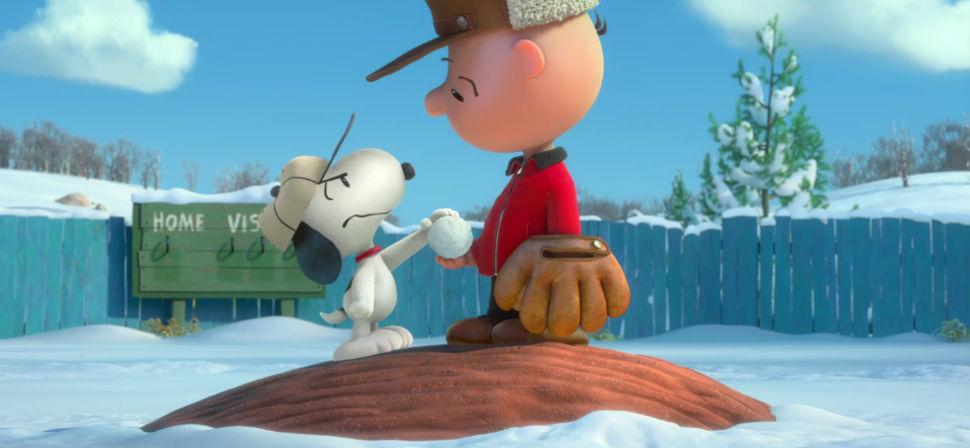
The Peanuts Movie (2015)
The Peanuts Movie comes billed as being “From the imagination of Charles Schulz,” and, almost astonishingly, it pretty much is.
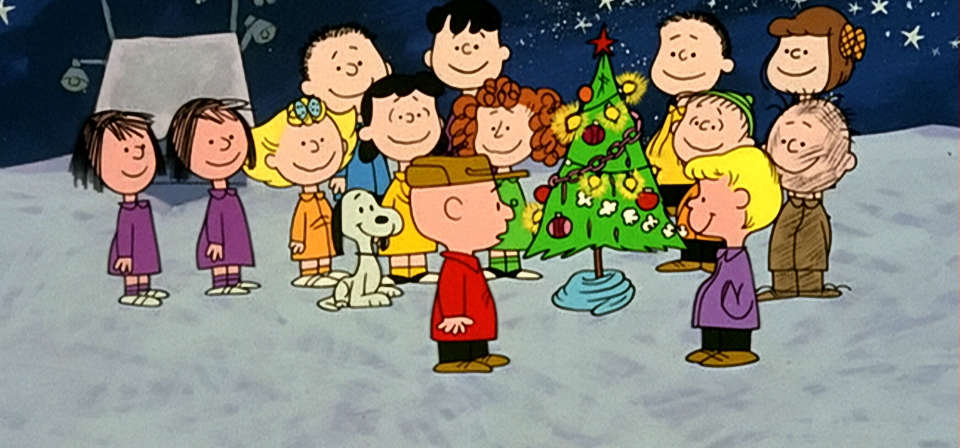
You’re an institution, Charlie Brown
“Peanuts”’ appeal was universal: It was beloved by young and old, by the intelligentsia as well as the masses; it was the definition of mainstream, yet it was also embraced by the counterculture. It was bitterly pessimistic, yet never succumbed to the despair and nihilism of, say, “Dilbert” or “Pearls Before Swine.”
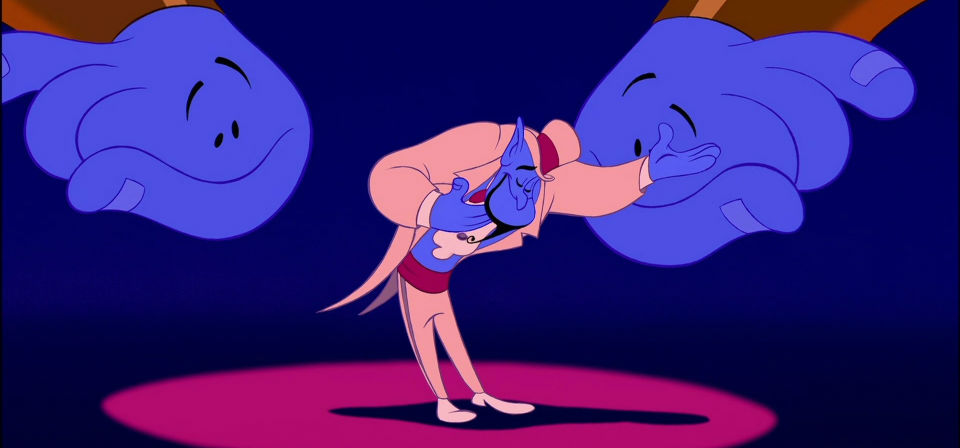
Aladdin (1992)
Disney’s Aladdin does more than give Williams an opportunity to let loose the comic giant inside him: It offers the Disney animators perhaps their greatest creative challenge, and inspiration, in over half a century.
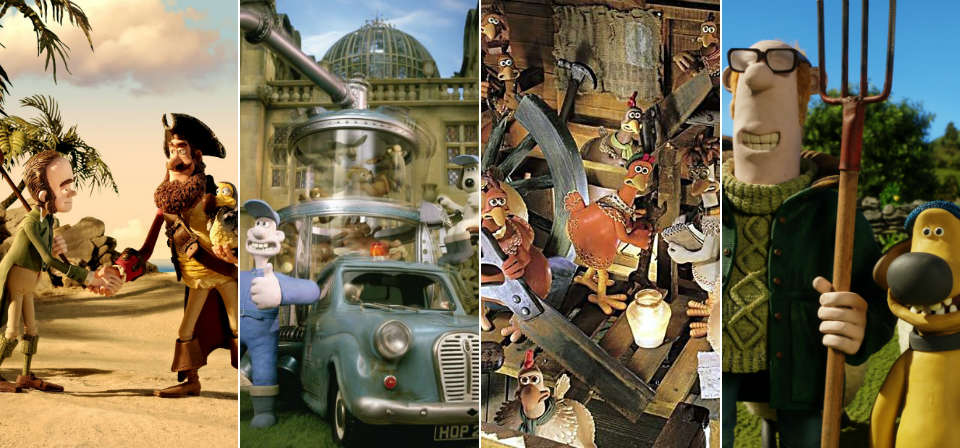
Shaun the Sheep and beyond: The magic of Aardman
For the Aardman filmmakers, it seems that inspiration and the tactile work of stop-motion go hand in hand.
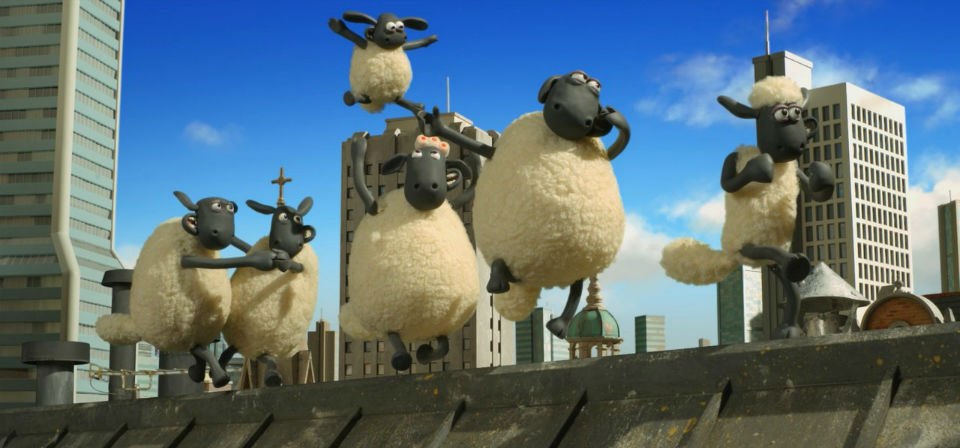
Shaun the Sheep Movie (2015)
The world of Shaun the Sheep puts a smile on my face before anything even happens.
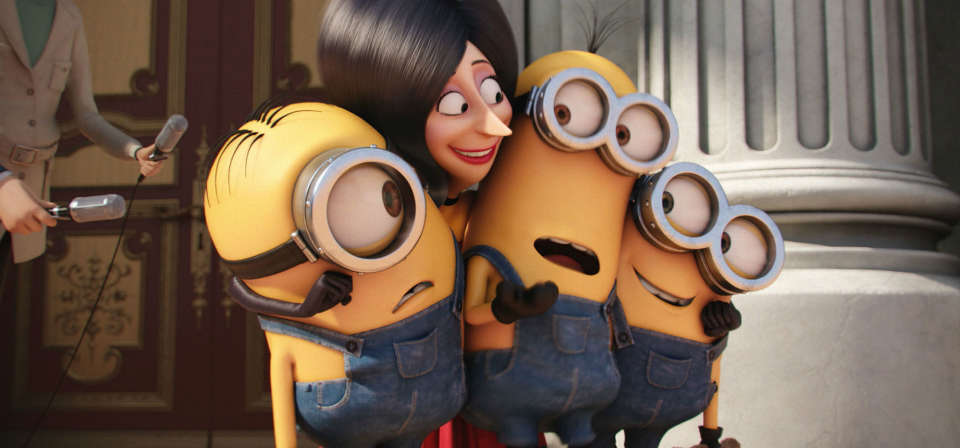
Minions (2015)
Like the Penguins of Madagascar and Mater the tow truck, the Tic-Tac-shaped, banana-colored Minions join the ranks of popular comic sidekicks who have taken over their animated franchises. This is usually a sign of the end, although Cars 3 is on the way, and nobody has said Madagascar 4 isn’t happening.
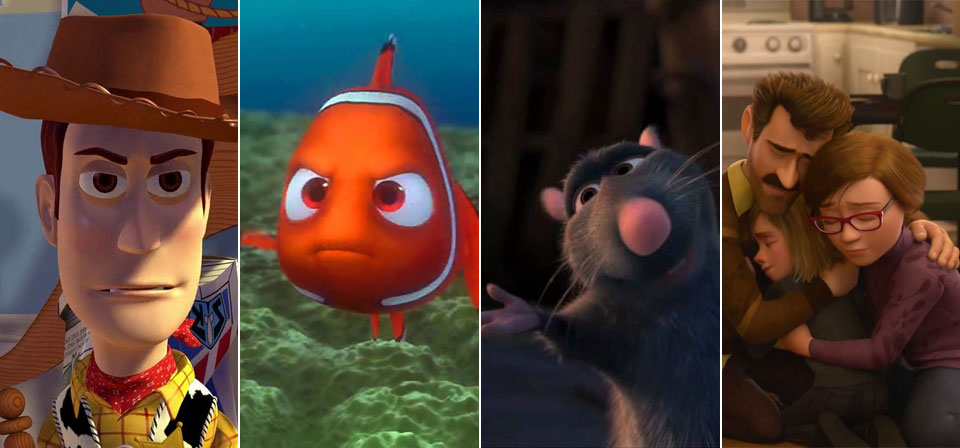
What’s so special about Pixar’s flawed protagonists and their moral journeys
Only Pixar regularly impresses on viewers that just because you’re the hero of your story doesn’t mean you’re right about everything: that you may make serious mistakes, there may be consequences, and you must take responsibility.

Inside Out (2015)
Inside Out is a rare family film for so many reasons: a story with no villain, for one thing, centering on an imperfect but basically happy intact family going through a tough time. It is a wise and wounding depiction of growing up, a story of growth and loss, with real stakes and real consequences.
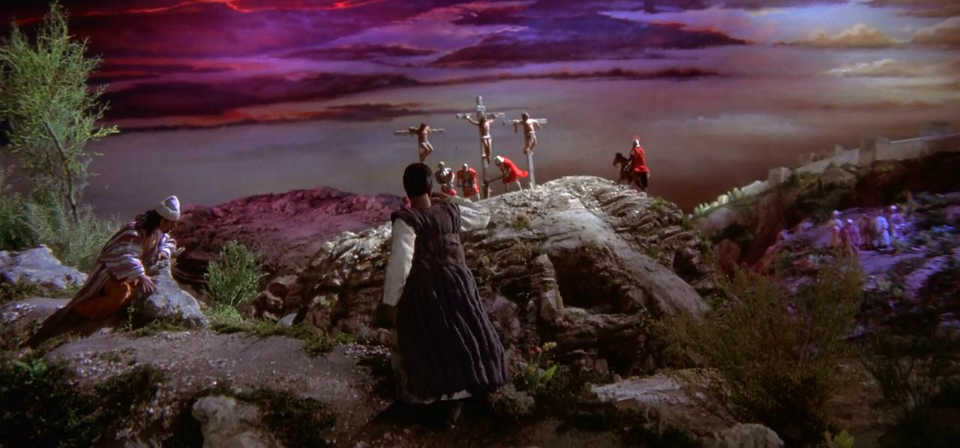
Must-see Easter season viewing: The Jesus movie for absolutely everyone
The Miracle Maker is a singular achievement: a Jesus movie that is simple enough for children, sophisticated enough for scripture scholars and theologians, and artful enough for discerning cinephiles.
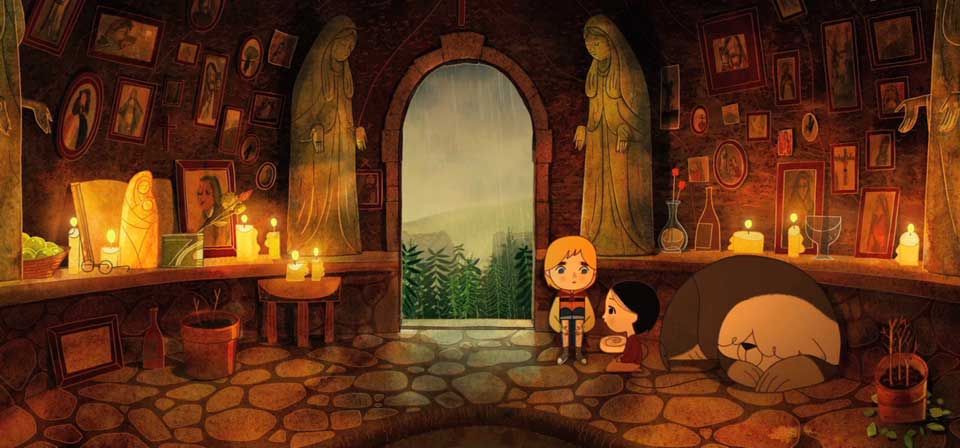
Song of the Sea (2014)
Like Miyazaki, Tomm Moore isn’t afraid to take the time to breathe deeply, savor moments of silence and beauty, and open the door to wonder and mystery.
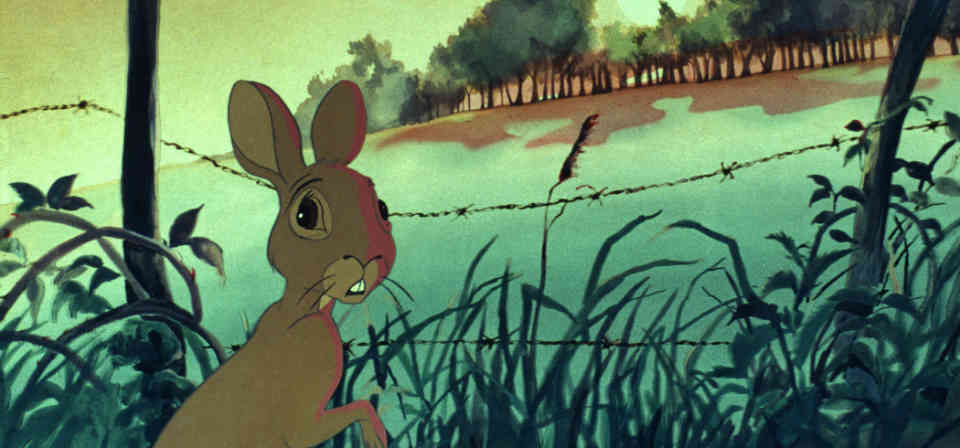
Watership Down (1978)
Newly remastered for Blu-ray and DVD, the classic animated adaptation of Richard Adams’ beloved tale is available from Criterion.
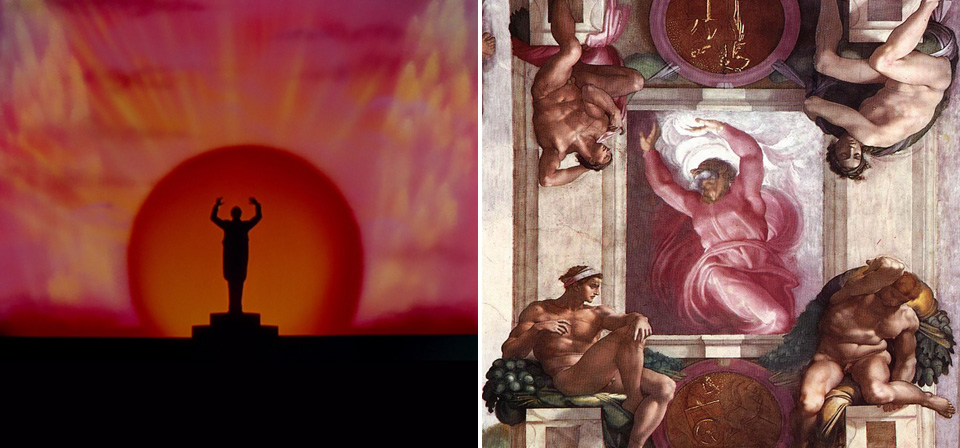
Fantasia: The Sistine Chapel of Disney animation
Among a few Disney films deserving of the title “masterpiece,” Fantasia remains a unique achievement.
![Penguins of Madagascar [video]](/uploads/articles/penguins-of-madagascar.jpg)
Penguins of Madagascar [video] (2014)
Stick a fork in them, they’re done. Or maybe that’s just me.
![Big Hero 6 [video]](/uploads/articles/big-hero-6_khVAOrT.jpg)
Big Hero 6 [video] (2014)
It’s a Marvel movie! It’s a Disney cartoon! It’s … a Marney movie! It’s set in San Fransokyo! Wait, what?
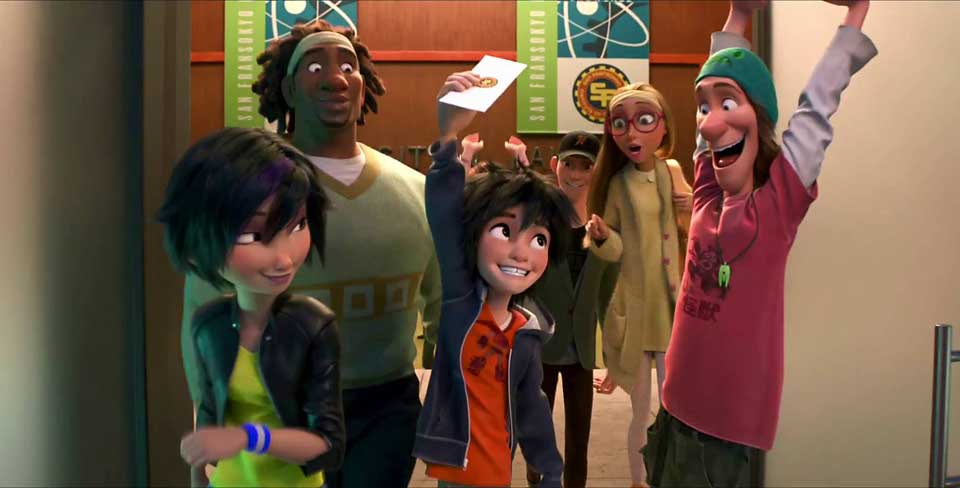
Big Hero 6 (2014)
At the intersection of Disney and Marvel, in a pan-Pacific megalopolis spanning San Francisco and Tokyo, in a world with one foot in science fiction and one in superhero adventure, is Big Hero 6. By my lights, this is a very good place to be.
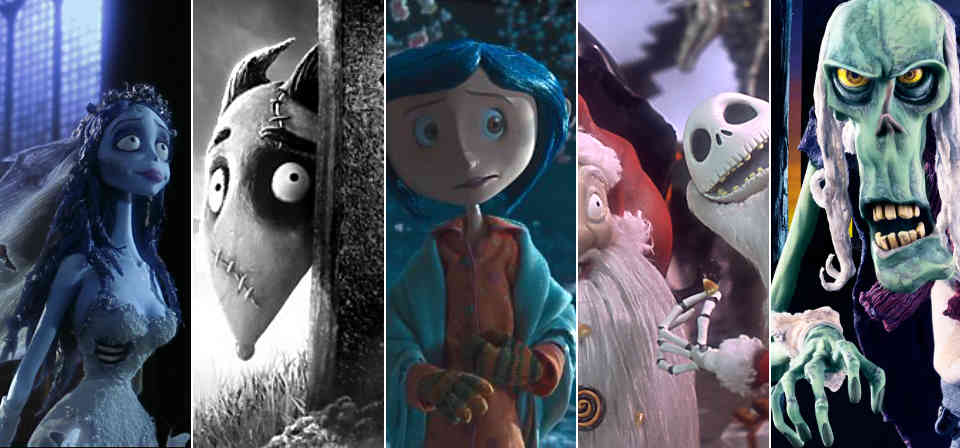
Stop-Motion Macabre
Stop-motion animation — which, unlike computer animation and traditional hand-drawn cel animation, utilizes real objects shot frame by frame, with tiny adjustments made between shots — is a defiantly old-fashioned, niche medium, often used to creepy effect: Henry Selick’s The Nightmare Before Christmas and Coraline; Tim Burton’s Corpse Bride and Frankenweenie; Aardman’s Wallace and Gromit: Curse of the Were-Rabbit.

The Boxtrolls (2014)
The Boxtrolls is so defiantly weird and bleak, so committed to the bitter end to its grotesque aesthetic and chilly story, that even as the film crashes and burns you can’t help being moved by the hardworking stop-motion animators’ devotion to their craft.
Planes: Fire & Rescue [video] (2014)
Looking at those Cars eyes is worse than having no remnant of Pixar at all this year.
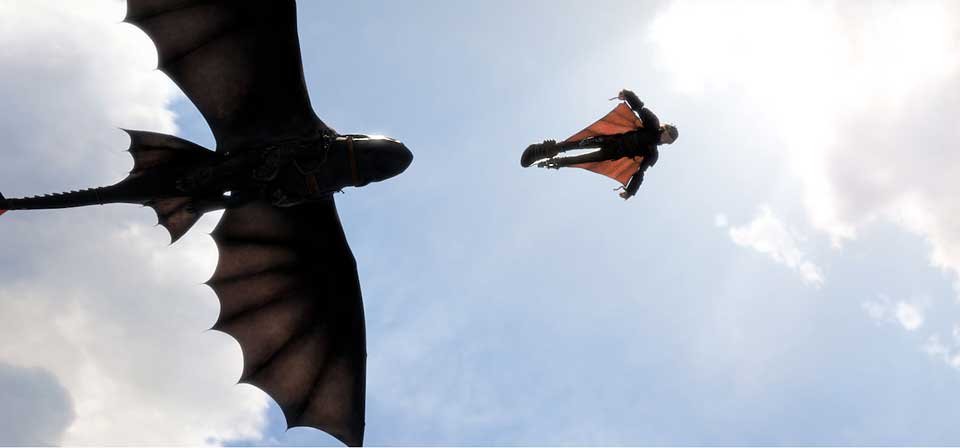
How to Train Your Dragon 2 (2014)
The first film related how Hiccup changed his village’s way of life forever, winning the love of the girl of his dreams, the approval of his authoritarian father and the respect of everyone in town — not to mention the loyalty of his magnificent new draconian friend, Toothless. Where do you go from there?
Ernest & Celestine [video] (2014)
I can’t imagine the soul who could watch this movie without smiling.
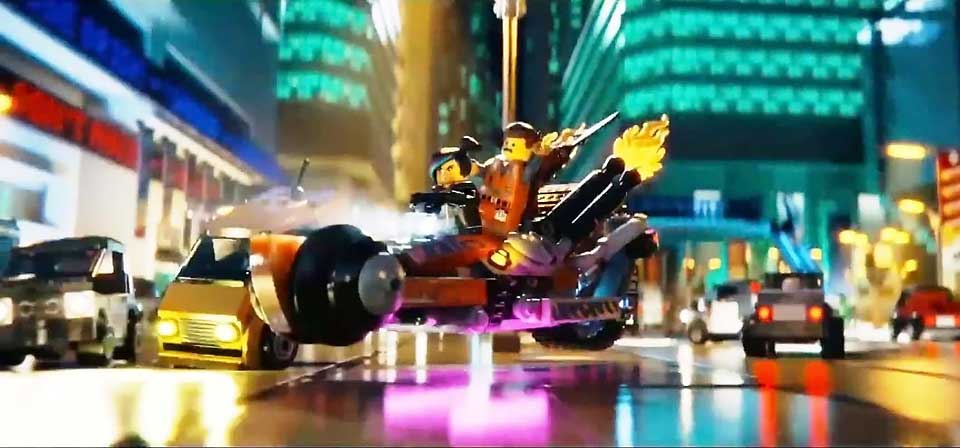
The Lego Movie (2014)
Here is something I didn’t see coming: The freshest, most unique animated family film from any Hollywood studio in well over a year is … based on a line of brightly colored plastic construction blocks and assorted accessories. I’m not kidding!

Frozen (2013)
Frozen may be the most tragic fairy tale in the Disney canon, which is saying something.
Frozen [video]
Compared to Disney’s last (and only other) computer-animated fairy tale, Tangled, Frozen has twice the princesses, twice the hunky love interests, twice the domesticated anthropomorphic ungulates … but not a fraction of the humanity.
Cloudy with a Chance of Meatballs 2 [video]
Part of me kind of wishes they had kept the original title Cloudy 2: Revenge of the Leftovers. Cloudy With a Chance of Meatballs 2: my 60-second “Reel Faith” review.
The Summer’s Best-Kept Secret: From Up on Poppy Hill
Co-written by Ghibli co-founder Hayao Miyzaki and directed by his son Goro Miyazaki (Tales From Earthsea), From Up on Poppy Hill is a gently naturalistic departure from the high-flying fantasy for which the studio is best known.
Planes [video]
It may be Pixar Ultra-Lite, but Disney’s Planes is a pleasant change of pace from the likes of The Croods and Turbo.
Planes (2013)
Both the big race and international flavor recall Cars 2 as well as DreamWorks’ Turbo, the protagonist of which had the same personal crisis as Dusty, a longing for speed he wasn’t built for. Yet Planes, in its modest way, cannily avoids the pitfalls that made those films unsatisfying.

Turbo (2013)
At some point, alas, it becomes apparent that Turbo’s more daring elements are all surface, and the story is locked into a well-worn path to an all-too-obvious destination. Writing about Monsters University, I noted that, like many other Pixar films, it pours cold water on the familiar family-film platitude that you can achieve anything you put your mind to if you just want it enough. Turbo embraces the platitude.
Despicable Me 2 [video]
He was bad to the bone. Now he’s Dad to the bone. Does his mojo survive the transition? Despicable Me 2: my “Reel Faith” 60-second review.
Despicable Me 2 (2013)
“Dr. Evil without Austin Powers,” I called Gru in my review of Despicable Me. Turning Dr. Evil into Austin Powers (mutatis mutandis, for a family film) is the best possible way to keep the reformed character from losing his mojo. (Oh, how Mike Myers has influenced this discussion!)
Monsters University (2013)
Monsters University, from first-time director Dan Scanlon, is a charming, well-crafted trifle — at least until the subversive last act, when it sets its sights a bit higher.
Epic (2013)
At its best, Epic produces images of poetic power, even grandeur … The catch is that the world the filmmakers create is far more interesting than the story they tell in it or the characters they put in it.
From Up on Poppy Hill [video]
Studio Ghibli takes a break from high-flying fantasy in this naturalistic, nostalgic coming-of-age story.
![Hotel Transylvania [video]](/uploads/articles/hoteltransylvania.jpeg)
Hotel Transylvania [video]
Even monsters need a vacation. I would like to think they’re more discerning than this.
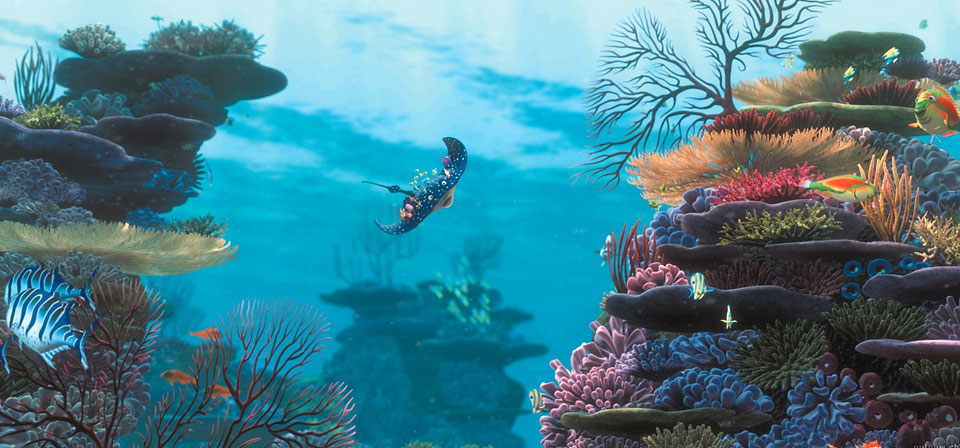
Finding Nemo (2003)
(New review for 3-D rerelease) Andrew Stanton’s Finding Nemo is the best father-son story in all of Hollywood animation, and maybe animation generally. It’s also a stunningly gorgeous film that exploits the potential of computer animation like no film before it and few films after it.
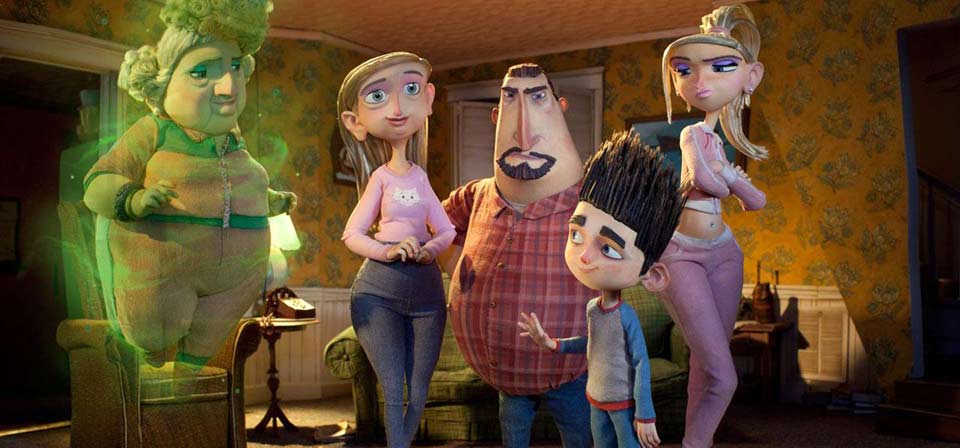
ParaNorman (2012)
Why does stop-motion animation work so well as a medium for the macabre, from The Nightmare Before Christmas to Tim Burton’s Corpse Bride to Coraline?
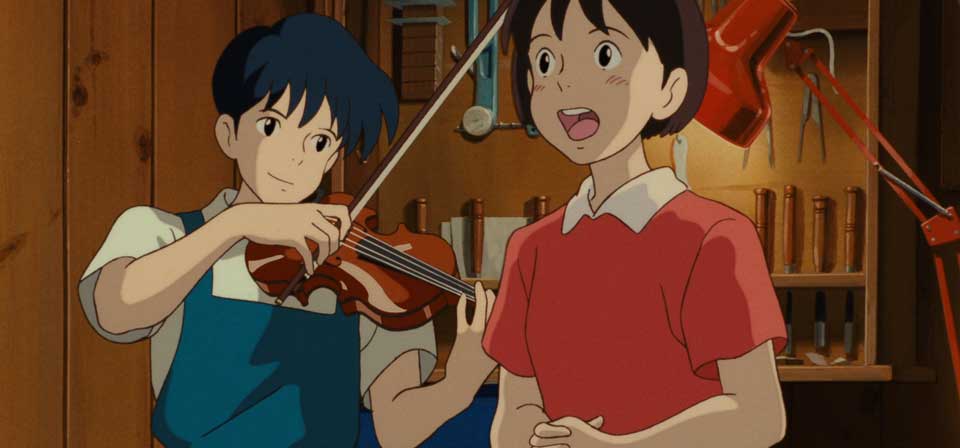
Whisper of the Heart (1995)
(Reviewed by Sarah E. Greydanus) Even at their most stunningly far-fetched, Ghibli films also have a history of celebrating the details of everyday life: cooking, cleaning, planting, studying, mending, become important and precious functions, worthy of devoted attention … Whisper of the Heart may represent the studio’s simplest gesture of this honoring of everyday life.
Ice Age: Continental Drift (2012)
Ice Age: Continental Drift is more like a Happy Meal than a movie. It’s another serving of exactly the same product that millions of families have been served before and will come back to again and again. Its brand-name familiarity and reassuring sameness are its stock in trade. Nothing is different except for the toys; last time it was dinosaurs, this time it’s pirates. It’s more resolutely like the three previous Ice Age movies than they are like themselves.
Brave (2012)
Among Hollywood animated films, it may be the most positive affirmation of family since The Incredibles and the best fairy tale since Beauty and the Beast.
Madagascar 3: Europe’s Most Wanted (2012)
I blame the penguins for Madagascar 3: Europe’s Most Wanted.
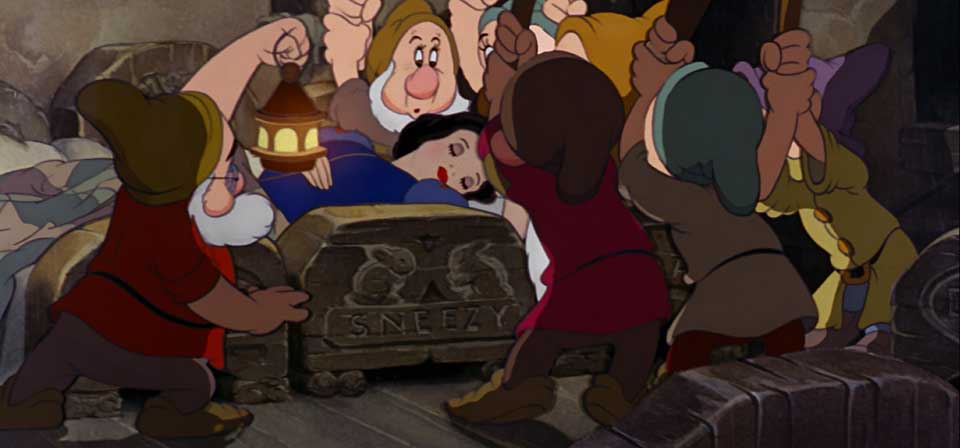
Snow White and the Seven Dwarfs (1937)
Walt Disney’s Snow White and the Seven Dwarfs is widely celebrated as a beginning, the first feature-length animated film in Hollywood history. It’s just as correct, though, and perhaps more illuminating, to hail it as a culimination — as the crowning achievement of years of experimentation, discovery, growth and achievement by Disney’s animation team.
The Pirates! Band of Misfits / In an Adventure with Scientists! (2012)
An Aardman film is always an exercise in absurdity, but The Pirates, directed by Peter Lord (Chicken Run) and Jeff Newitt, is possibly their silliest ever. This is the kind of film in which people say things like “Blood Island! So called because …it is the exact shape of some blood!” And: “You can’t always say Arrrrr! at the end of a sentence and think that makes everything all right.” And: “London town: the most romantic city in the world.” (Followed by: “London smells like Grandma!”) Those crazy Brits!
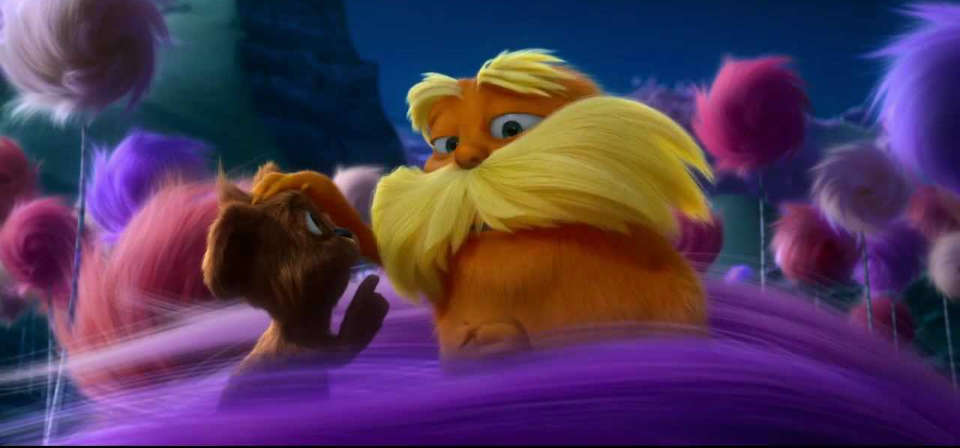
The Lorax (2012)
Well … its heart’s in the right place. Give the filmmakers that. / This isn’t The Grinch or The Cat in the Hat. / It’s not outright ugly, though it slips off the rails. / It wants to be decent. It tries. But it fails.
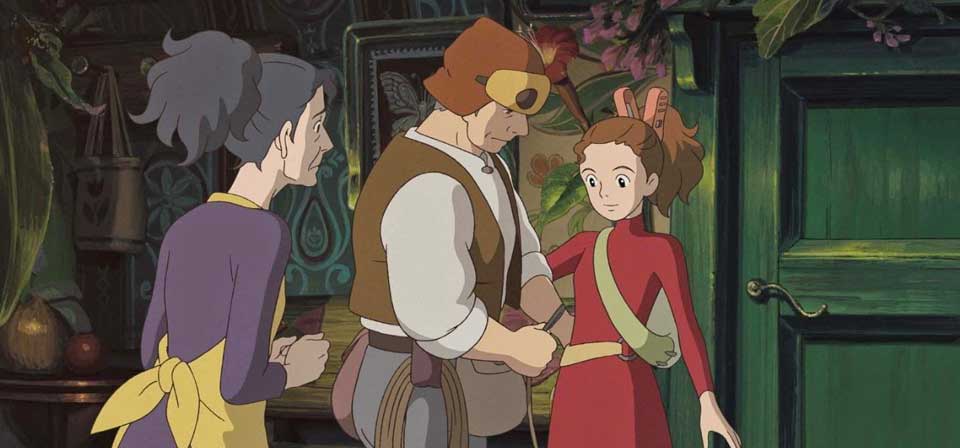
The Secret World of Arrietty (2012)
The Secret World of Arrietty just might change the way you look at the world around you — right around you. A wide-eyed sense of discovery and revelation permeates the film, and what it reveals is … the mystery and wonder of an ordinary home.
The Adventures of Tintin: The Secret of the Unicorn (2011)
Tintin in the comics was the perpetual small-town boy next door. Tintin in the movie is like the boy next door who’s been watching “Mantracker,” “Man vs. Wild” and “Mythbusters” for so long that he’s completely jaded to reality.
Arthur Christmas [video]
Here’s my 30-second take on Aardman Animation’s Arthur Christmas.
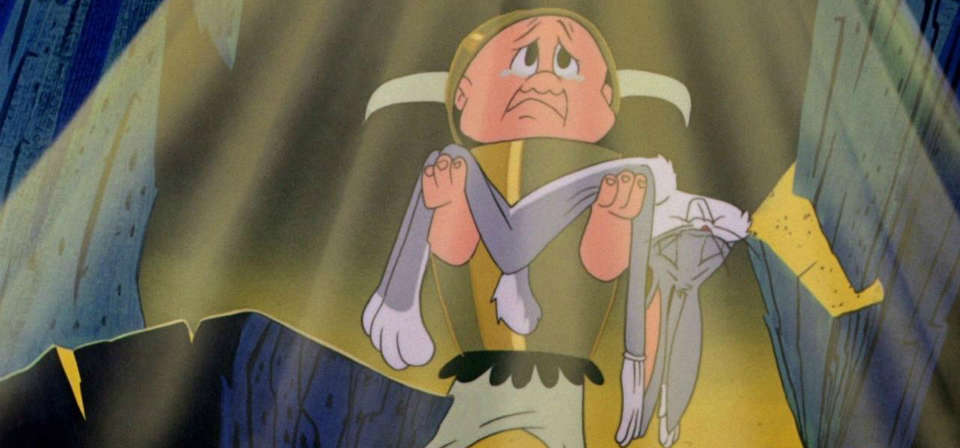
Looney Tunes: An Appreciation
I don’t remember the first time I encountered Charlie Chaplin or the Marx Brothers, or the first time I saw Casablanca, but whenever it was, I came to them with some inkling of what lay in store thanks to Looney Tunes.
Happy Feet Two (2011)
Little ones are “tougher than we think,” a penguin remarks in Happy Feet Two, and you can tell director George Miller believes it. The animated sequel pulls few punches: It’s overshadowed by more darkness, menace, heartache and anxiety than any talking-animal picture I can think of since, well, Miller’s last family-film sequel, the execrable Babe: Pig in the City. Neither the classic Babe nor the original Happy Feet contained any hint of the darkness of the sequels. Apparently Miller’s strategy is to soften kids up first, then drop the bomb.
Puss in Boots (2011)
Banderas’s swashbuckling Puss in Boots first appeared in Shrek 2, quickly establishing himself as one of the most popular supporting characters in the franchise. Now in a starring role in this spinoff, Puss spins the story in a direction strikingly different from the Shrek films.
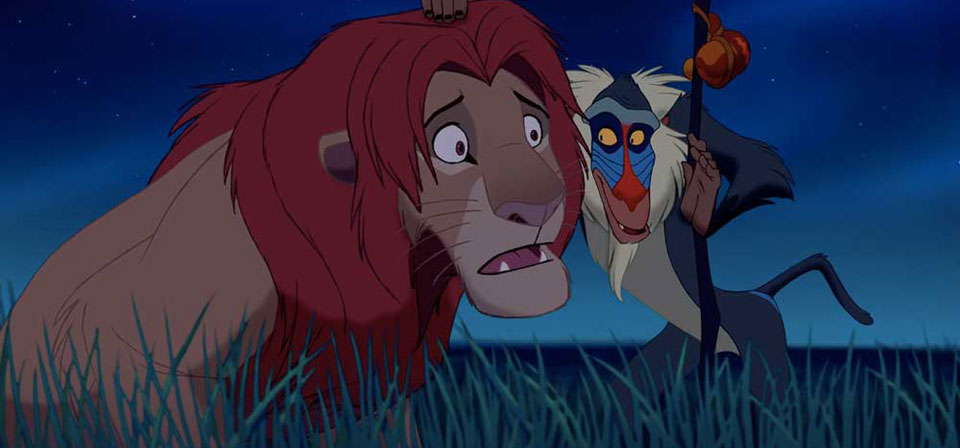
The Lion King (1994)
Chronologically, The Lion King stands between the striking triumphs of the early Disney renaissance (The Little Mermaid, Beauty and the Beast and Aladdin) and the bumpy deterioration of the latter 1990s (Pocahontas, The Hunchback of Notre Dame, Hercules, etc.). One way or another, it’s at the turning point between Disney’s creative renewal and its eventual decline. Fans might locate it near the pinnacle, along with Beauty and the Beast, but I don’t feel the love.
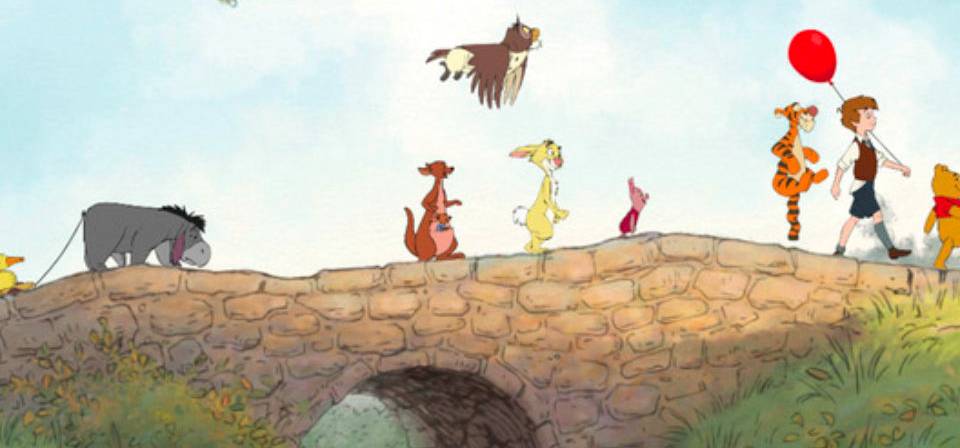
Winnie the Pooh (2011)
Disney’s new Winnie the Pooh is an unexpected gift, an unlikely return to a magical and gentle world that belongs so firmly to the past that I would have thought the journey all but impossible.
Cars 2 (2011)
Visuals aside, Cars 2 is the first Pixar film ever (or at least since A Bug’s Life) that could one could easily imagine as a DreamWorks film—circa Shark Tale perhaps, with its punningly fishified analog of the human world. Or, with its frenetic action and gimmickry, Cars 2 bears some resemblance to a Blue Sky Studios cartoon (circa Robots, say, or Rio, with its world culture flavor). In a word, not only is Cars 2 mediocre, it doesn’t even feel like mediocre Pixar.
Kung Fu Panda 2 (2011)
Returning screenwriters Jonathan Abel and Glenn Berger recognize that what’s needed is deeper emotions and darker themes as well as more action and higher stakes … At the same time, the movie makes three key mistakes.
Rio (2011)
From the arches of the Carioca Aqueduct to Sugarloaf Mountain, from the flamboyant costumes of the samba schools to the sundrenched beaches of Guanabara Bay, Rio is as colorful a look at a faraway world as kids are likely to get without reading subtitles.
Tangled (2010)
We really do accept as normal whatever we’re raised with, don’t we? Like, say you’ve lived all your life alone in a lonely tower in a hidden valley, and your golden hair is 70 feet long, and the only mother you’ve ever known — the only person you ever see — comes and goes using your hair as a rope ladder, and she’s never let you so much as set one foot outside, and your hair does this magic trick when you sing that — well, not to give it away, but that would just be life to you, wouldn’t it?
Megamind (2010)
Megamind is a satiric take on the Superman mythos, seen through the eyes of a supervillain who’s part Lex Luthor, part Brainiac. Instead of a rocket ship bearing an infant survivor from a doomed planet to Earth, there are two ships from two planets. Fate deals the infant survivors very different hands: One is a super-powered golden boy who grows up privileged and smugly superior; the other grows up on the fringes of society, an outcast with one asset: his super-brain. It seems the two are destined to battle each other forever … or are they?
Beauty and the Beast (1991)
At the intersection of great animated films, great filmed stage musicals, and great fairy-tale romances, Disney’s Beauty and the Beast stands alone. Directed by Gary Trousdale and Kirk Wise, it is simply the quintessential Disney masterpiece, the perfection of everything that Cinderella, Alice in Wonderland, Sleeping Beauty and The Little Mermaid aspired to.
Alpha and Omega (2010)
Boy meets girl. Girl is totally out of boy’s league. Girl meets other boy who is not out of her league. But he can’t sing. But she has to marry him anyway to keep peace between their families. Girl and first boy are shot with tranquilizer darts and relocated to Idaho to repopulate. Girl and boy embark (bark! ha ha!) on road trip back home. Girl falls for boy on the way. Back home, other boy falls for other girl. Cue climactic action scene and end with musical number. The end.
Tales From Earthsea (2006)
Does Tales From Earthsea, the latest Studio Ghibli release brought to North American theaters by Disney, have the Miyazaki touch? Well, yes and no.
Despicable Me (2010)
To his suburban neighbors, Gru is a grumpy bald guy whose house looks like the Haunted Mansion and whose ride makes the Dark Knight’s Batmobile look like a Prius. He’s the one who makes tasteless “jokes” about killing your dog if it goes on his lawn again and pretends not to be home when girls come around selling cookies. You know the type.
Toy Story 3 (2010)
At times Toy Story 3 feels a bit less fleet-footed than its predecessors, though there’s nothing that doesn’t work. Lee Unkrich, who co-directed Toy Story 2, Monsters, Inc. and Finding Nemo, directs with a sure hand. The story is stuffed with wit and invention, such as a couple of premise-bending applications of the Potato Heads’ modular body parts and some hilarious riffing on Ken and Barbie.
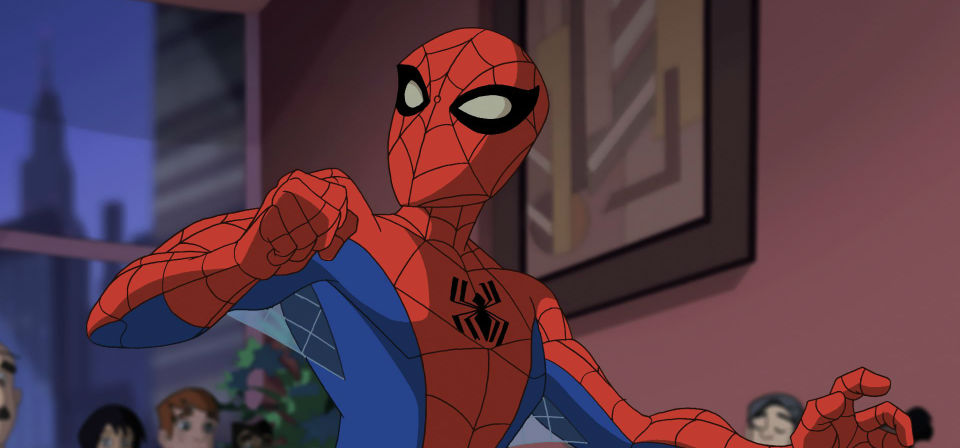
Spectacular, Spectacular Spider-Man!
All good things must come to an end, but “The Spectacular Spider-Man” ended too quickly, after only two seasons. In April 2010 Marvel pulled the plug on the acclaimed but long-stalled series, leaving the season 2 finale as the satisfying but not fully resolved series climax.
Shrek Forever After (2010)
After three Shrek films aimed squarely at adolescents, I’m mildly surprised to find that DreamWorks has made a final chapter aimed more or less at middle-aged men, and specifically husbands and fathers. You know, undemanding middle-aged men going to a Shrek movie. But still.
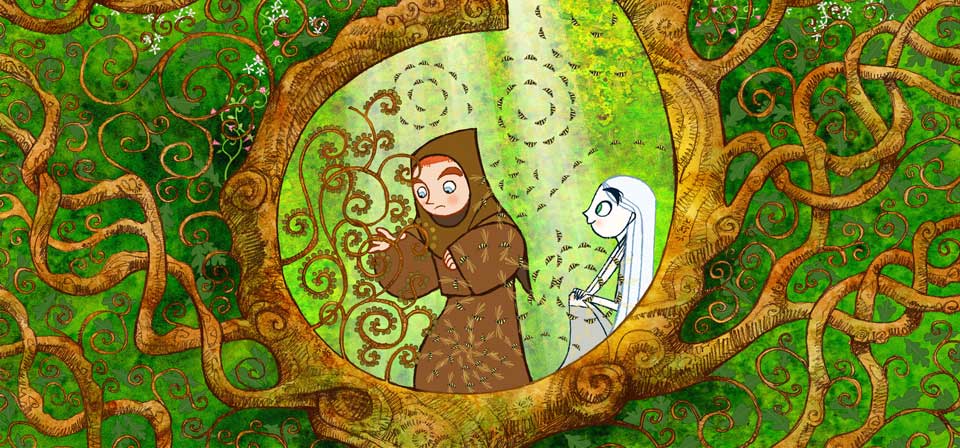
The Secret of Kells (2009)
The unknown eighth or ninth-century Irish monk who, in a playful respite from his normal work, penned in the margins of a Latin New Testament manuscript an affectionate ode in his native tongue to the mouse-catching prowess of his white cat would surely be astounded to find Pangur Bán again commemorated in pen and ink over a millennium later, romping across backgrounds that look at times like the decorative work of the monks themselves brought to life.
How to Train Your Dragon (2010)
“Vikings versus dragons” is definitely one of the cooler premises for a computer-animated tale to come along in a while. Differentiate the dragons into half a dozen distinct species, each with unique traits, from the roly-poly Gronkle to the two-headed Hideous Zippleback and the stealthy, jet-black Night Fury, and it’s even cooler — especially if the dragons are ordinary beasties rather than anthropomorphized talking monsters.
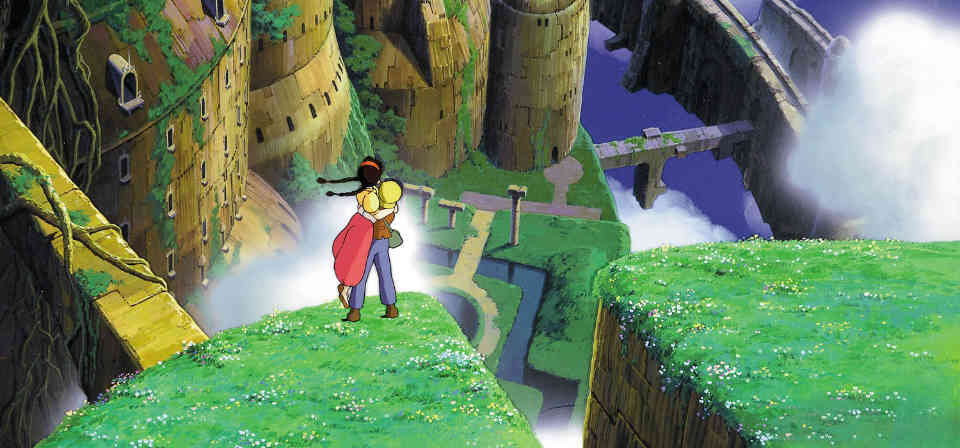
Laputa: Castle in the Sky (1986)
From the Leonardo-like engineering illustrations of the opening credit sequence to the hauntingly surreal final image on the edge of space, Hayao Miyazaki’s Laputa, or Castle in the Sky as it’s been dubbed for English-speaking audiences, displays the filmmaker’s visionary brilliance as a shaper of worlds as compellingly as any film he has made.
Small-Screen Aardman: Wallace & Gromit Shorts and Shaun the Sheep
More wordless Aardman animation on DVD!
The Princess and the Frog (2009)
There’s a villain with magical powers — but instead of Disneyfied magic, like Aladdin’s friendly genie, the film’s New Orleans voodoo is an occult world of terrifying powers and principalities in which the villain himself is at much at risk as anyone. It’s almost Disney’s most overtly Christian depiction of magic and evil at least since Sleeping Beauty, if not ever — though the waters are muddied by a benevolent, swamp-dwelling hoodoo mama in a sort of fairy-godmother role.
Cloudy with a Chance of Meatballs (2009)
What’s the last family film you can think of that name-checked Nikola Tesla and Alexander Graham Bell? When in movie history has the girl ever revealed her true self and become more attractive to the hero by putting on spectacles and pulling back her hair?
9 (2009)
I don’t want to be too hard on 9. It’s the first film of a director who shows some promise, and a bravely idiosyncratic vision free from commercial pandering. It will probably fade quickly at the box office while soulless marketing machines like G. I. Joe and Transformers slog on and on. But Acker does himself no favors with rote anti-dogmatism and vapid characterizations.
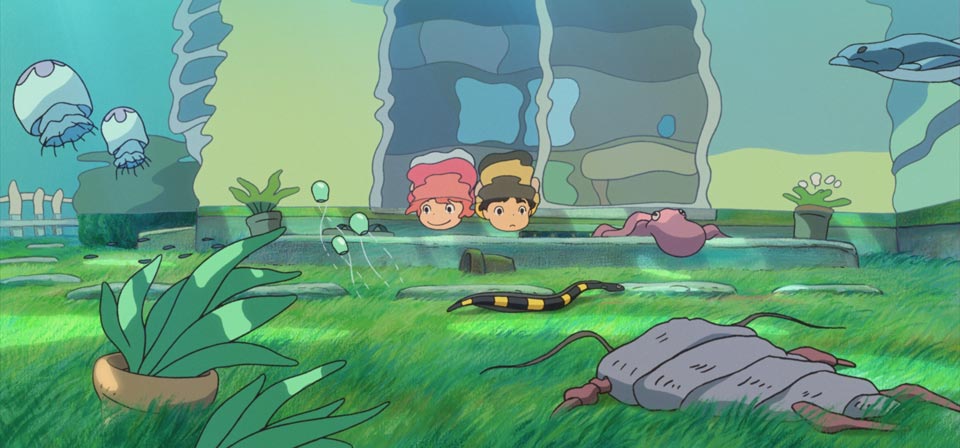
Ponyo (2008)
Although Ponyo seems as disjointed and free-floating as Howl’s Moving Castle, somehow the younger milieu here makes it more acceptable. Or maybe it’s just that there’s more here to latch onto emotionally.
Ice Age: Dawn of the Dinosaurs (2009)
As a collection of parts, almost an anthology of ideas, Dawn of the Dinosaurs is fitfully entertaining … Alas, Dawn of the Dinosaurs also marks Blue Sky Studios’ descent into the kind of crude and suggestive humor they once left to DreamWorks.

Up (2009)
As wonky as the proceedings get, director Pete Docter (Monsters, Inc.) and screenwriter and co-director Bob Peterson (Finding Nemo) never entirely lose touch with the ragged human emotions underlying the story. There’s an obvious metaphor in the film itself for the strange blend of realism and zaniness, partly tethered to solid ground, partly twisting in the capricious winds of whimsy.
Battle for Terra (2009)
Watching Battle for Terra, the latest computer-animated offering presented in 3D, is little like stepping into a breathtaking cathedral in a strange city and finding a church play going on in the middle of it. The drama may be competently done, but it’s the least interesting thing in the room. You keep looking past the action, stealing glances to one side or the other, absorbed in the splendor of the setting. Earnest as the players are, the moralizing story draws you in only fitfully, and most of the time you’d rather steal away and just wander aimlessly from one corner to another, taking it all in.
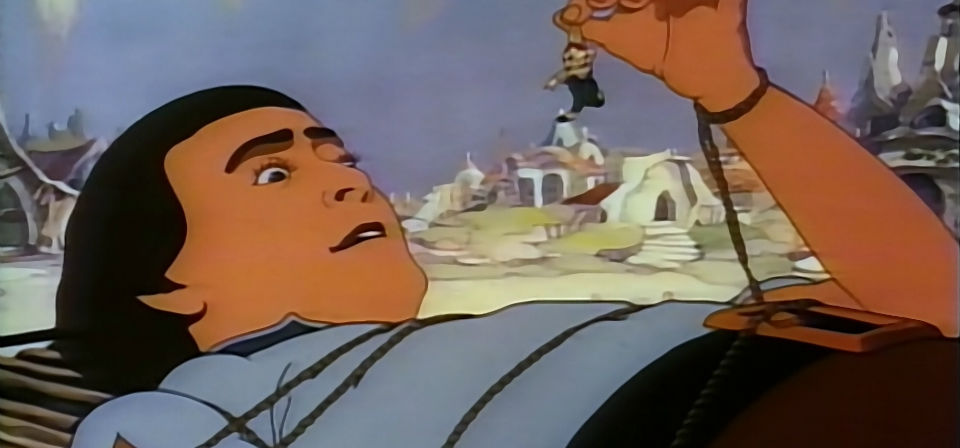
Gulliver’s Travels (1939)
Coming on the heels of Disney’s landmark Snow White, Gulliver’s Travels, from rival Fleischer Studios, is an intriguing case study in the elusive gap between decent work by talented animators and a successful and satisfying film.
Monsters vs. Aliens (2009)
As a tale of female empowerment and male comeuppance, Monsters vs. Aliens might have been provocative, like, 50 years ago. Today, nothing seems more subversive — and unlikely — than a family film with a heroic leading man who’s the equal of the leading lady — one boys can look up to without having to learn a lesson about male weakness. Now that’s a movie I’d like to see.
Bolt (2008)
It’s not quite Pixar grade, but Bolt blots out tepid memories of the likes of Chicken Little and Home on the Range, standing comfortably beside the likes of Kung Fu Panda and Horton Hears a Who in the race for second-best computer-animated family film of 2008.
Oliver & Company (1988)
The last gasp of Disney Animation’s post-Walt malaise before the 1990s Disney renaissance, Oliver & Company borrows names and vague situations from Oliver Twist, but in place of Dickens’s sentiment and Victorian moralizing Oliver has only a misguided stab at “attitude.”
Pinocchio (1940)
Emotionally resonant, visually dazzling, imaginatively captivating, thematically rich, Walt Disney’s Pinocchio may just be the greatest of all the early Disney masterpieces, possibly outshining Snow White, Fantasia and Bambi.
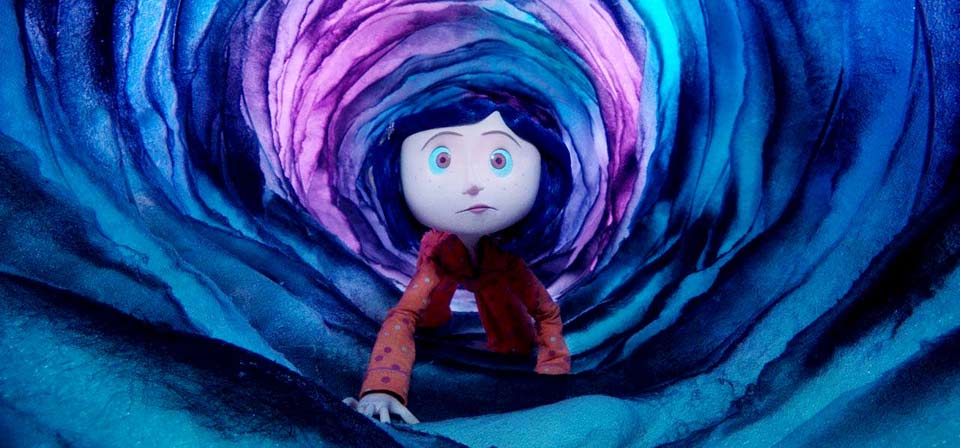
Coraline (2009)
With its dark tale of changeling parents and imprisoned souls, Coraline comes closer to the spirit of the traditional European fairy tale than perhaps any other film, animated or otherwise, in recent memory.
The Tale of Despereaux (2008)
Here is a mouse-hero who is truly serious about honor, devotion and courage, in a movie that feels like a storybook rather than an action movie — a movie that, in addition to honor and devotion and courage, is also about longing, imagination, resentment, contrition, forgiveness and redemption. It’s also a trippy movie in which the kingdom of Dor celebrates the annual Soup Day festival like Mardi Gras in New Orleans, rain magically stops falling when the queen dies and a sort of magical food golem helps the royal chef create new soups.
Madagascar 2: Escape 2 Africa (2008)
Madagascar 2 not only recalls Happy Feet’s satire of religion, it also makes the latter’s coy coming-out subtext look tame compared to its own overt running theme of sexual diversity.
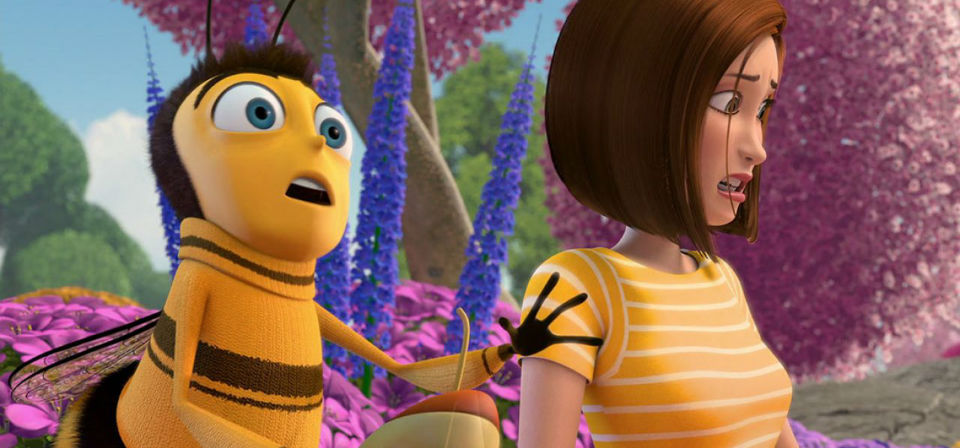
Bee Movie (2008)
As bright-hued as it is dim-witted, Bee Movie is a scattered oddity of a film, combining warm, candy-colored computer-animated visuals, occasionally laugh-out-loud absurdist humor and such profound stupidity about birds and bees — and flowers and trees — that kids watching it will actually lose “facts-of-life” IQ points. Which, for the record, is not a good thing.
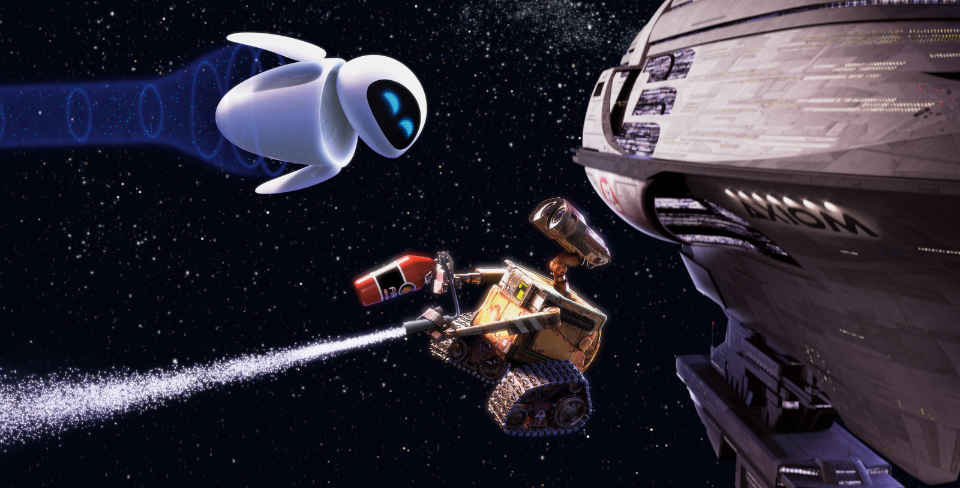
WALL•E (2008)
Even Pixar has never attempted anything on a canvas of this scale. From Monsters, Inc.’s corporate culture to Finding Nemo’s submarine suburbia, previous Pixar films have never strayed too far from the rhythms of real life. … WALL‑E creates a world that, despite clear connections to contemporary culture, looks and feels nothing like life as we know it, with unprecedented dramatic and philosophical scope.
Kung Fu Panda (2008)
The action, though no more realistic than the most cartoony chop-socky movies, is really intense — too intense for sensitive youngsters. For kids up for rolling with the punches, though, Kung Fu Panda may just be DreamWorks Animation’s most entertaining and endearing CGI cartoon to date.
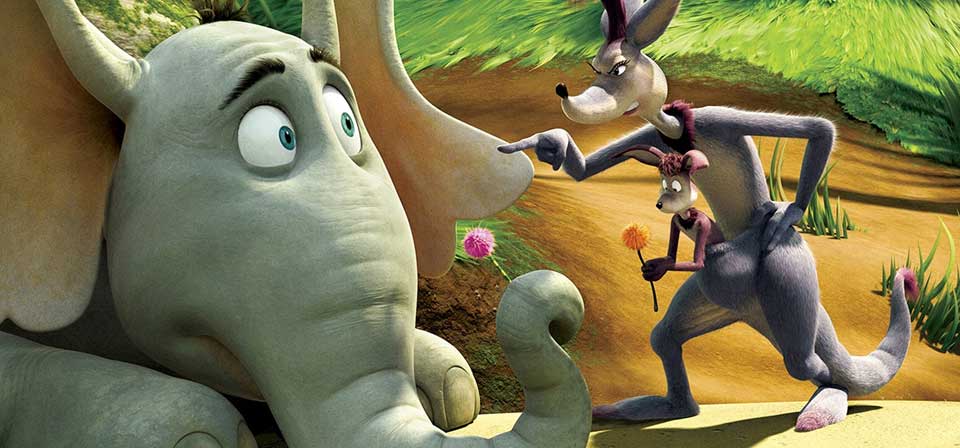
Dr. Seuss’s Horton Hears a Who! (2008)
One book can’t contain Horton’s dogged heroics! / His stoical pluck shows up all other stoics! / And it gets even better! I’m pleased to relate / That Horton’s the very best Blue Sky to date.
Enchanted (2007)
(Written by Suzanne E. Greydanus) Where is the real man here? Giselle’s rapport with Morgan and sweet naiveté are endearing; are we supposed to find Edward’s incompetence and arrogance equally so? Do our female hearts swoon when he checks his teeth in his sword, or boorishly flails it about at everything that moves? Why can’t the prince be an idealized example of chivalry, bravery, strength and honor, as Giselle is of sweetness and goodness?
The Ten Commandments (2007)
Although less speculative and less freely adapted than the earlier film, The Ten Commandments shamelessly rips off interpretive conceits and even specific dramatic beats from The Prince of Egypt, from the menacing of Moses’ basket by a passing croc to the foundering of Ramses’ chariot on the shores of the Red Sea, allowing him to live to see the destruction of his army and the escape of the Israelites.
The Jungle Book (1967)
As interpreted by Disney and director Wolfgang Reitherman, The Jungle Book is essentially a coming-of-age parable about carefree childhood and adult responsibility, embodied respectively by Mowgli’s two mentors, Baloo the bear and Bagheera the panther (Sebastian Cabot).
Ratatouille (2007)
Ratatouille is a revelation — a delightfully surprising discovery in a genre that seldom surprises even savvy youngsters, a warm and winsome confection that will be treasured by viewers young and old long after the mediocrities of summer 2007 have been justly forgotten.
Shrek the Third (2007)
Shrek the Third continues the deliberate bad taste that is the franchise’s hallmark, with the usual hit-and-miss results… What’s missing is the heart that leavened the first two films.
Happy Feet (2006)
No, it wouldn’t be entirely accurate to call the CGI cartoon Happy Feet an effort to claim penguins for the other side of the culture wars. But it wouldn’t be wholly wrong either.
Happily N’Ever After (2007)
Ella’s so blindly devoted to the Prince, and so convinced that he’s the one to save the day, that she seems just another swooning groupie rather than a worthy heroine. If she hasn’t any more sense than that, what exactly does Rick see in her? What does that say about him?
Flushed Away (2006)
If Flushed Away doesn’t reach the heights of demented genius of The Curse of the Were-Rabbit or even the lesser charms of Chicken Run, it’s still got a goofy inventiveness that puts it in the better half of this year’s crop of CGI films.
Everyone’s Hero (2006)
As a memorial, Everyone’s Hero is a little, well, forgettable — old-fashioned, sweet, but ultimately disposable family fare with echoes of better films from Toy Story to The Iron Giant.
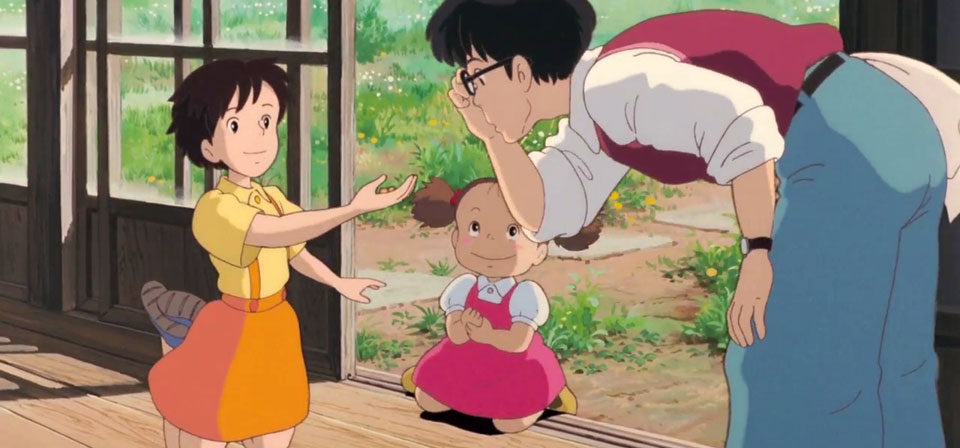
My Neighbor Totoro (1988)
How can I describe the inexplicable power of My Neighbor Totoro, Hayao Miyazaki’s timeless, ageless family film? It is like how childhood memories feel, if you had a happy childhood — wide-eyed and blissful, matter-of-factly magical and entrancingly prosaic, a world with discovery lurking around every corner and an inexhaustible universe in one’s backyard.
Monster House (2006)
In a way, Monster House is a bracingly icy breath of fresh air, a tween-oriented family film that is unabashedly out to frighten.
Cars (2006)
Cars is Pixar’s most improbable success to date, a film that could easily have misfired, but somehow does not.

Dumbo (1941)
Somebody has to say it: Made at the height of Disney’s early brilliance alongside Snow White and the Seven Dwarfs, Fantasia, Pinocchio, and Bambi, Dumbo is the odd weak link in the chain.
Over the Hedge (2006)
Over the Hedge may satirize suburban foibles, but that doesn’t mean family audiences need to see themselves as the target. Who really likes plastic flamingos, anyway?
Ice Age 2: The Meltdown (2006)
Ice Age 2 isn’t really a meltdown, but it’s no bolt from a Blue Sky.
Wind in the Willows [Hall/Taylor] (1983)
For atmosphere, for style, for the best evocation of the spirit and feel of The Wind in the Willows, you can’t do better than the Hall/Taylor version.
Cinderella (1950)
Coming in the wake of a string of early classics — Snow White and the Seven Dwarfs, Pinocchio, Fantasia, Dumbo, Bambi — Disney’s Cinderella represents, alas, the early stages of Disney-itis.

Wallace & Gromit: The Curse of the Were-Rabbit (2005)
Stop-motion animation cult heroes Wallace & Gromit, the brainchildren of British animator Nick Park of Aardman Animations, may not be unchanged in the transition from their charmingly dotty, wildly funny shorts to their first feature-length film, but they’re still recognizably themselves.
Corpse Bride (2005)
As imagined by Tim Burton in stunning, wildly stylized stop-motion animation overtly reminiscent of The Nightmare Before Christmas yet technically far beyond it, this macabre fairy tale becomes, variously, a poignant meditation on the daunting weightiness of the vows of marriage, a raucous danse macabre in jumping jazz rhythms and florid colors, a visually rich celebration of Edward Gorey Gothic-Victorian and Charles Addams grotesque, and, perhaps most surprisingly, a touching portrait of tragedy, doomed love, empathy, and sacrifice.
Ben-Hur [A Tale of the Christ] (2003)
In 2003, Charlton Heston reprised his greatest role, if in voice only, in an animated made-for-TV version of Ben-Hur from the director and producers of the animated “Greatest Heroes and Legends of the Bible” series.
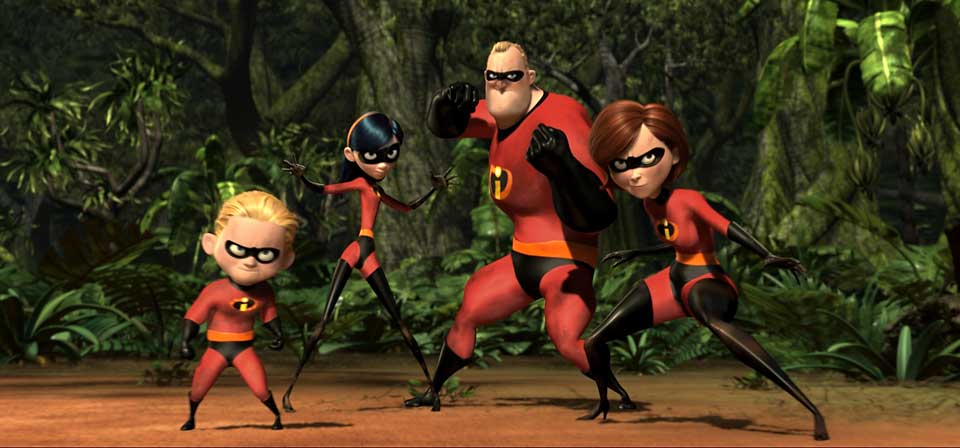
The Incredibles (2004)
The Incredibles is exhilarating entertainment with unexpected depths. It’s a bold, bright, funny and furious superhero cartoon that dares to take sly jabs at the culture of entitlement, from the shallow doctrine of self-esteem that affirms everybody, encouraging mediocrity and penalizing excellence, to the litigation culture that demands recompense for everyone if anything ever happens, to the detriment of the genuinely needy.
Robots (2005)
Robots combines the visionary alternate world-building of Monsters, Inc., the flair for gadgetry and gimmickry of an old Fleishers cartoon, and most sneakily of all, the toybox nostalgia of the Toy Story movies, with cleverly worked-in toy and game references — “Operation,” Slinky, Wheelo — that will have adults grinning with recognition.
Bambi (1942)
The process of growing and learning is often glossed over in plot-driven coming-of-age films like The Lion King. By contrast, Bambi is about nothing else. With the patient single-mindedness of a child learning to walk or talk, the film focuses on the young deer prince’s repeated attempts to prop himself up on his stilt-like legs, to hop over a log, to say a word, to distinguish one boldly colored or flying thing from another. We see Bambi makes friends, cower at a thunderstorm, discover girls, and, in a defining, indelible scene recalled by subsequent films from The Lion King to Finding Nemo, face crushing tragedy. We watch him go from perplexed distaste at the mysteries of the opposite sex to falling head over heels, and we see him confronted with the implacable necessity of fighting for love.
The SpongeBob SquarePants Movie (2004)
(Written by Jimmy Akin) SpongeBob SquarePants (Tom Kenny) is a sponge who wears square pants and who lives in a town on the ocean floor called Bikini Bottom (get it?). He’s also an ace crackerjack fry cook in a greasy spoon called the Krusty Krab.
Peter Pan (1953)
For millions of children and adults, Disney’s Peter Pan is THE Peter Pan, as well as a defining moment in Disney animation, giving the studio its logo mascot, Tinker Bell.
The Polar Express (2004)
Van Allsburg’s simple story of a nameless, doubting boy who rides a magical train to Santa’s home at the North Pole is fleshed out by introducing us to a few of his young fellow passengers, and also by making the train ride and the visit to the North Pole far more eventful. These additions are fairly consonant with the spirit of Van Allsburg’s work; almost any two minutes of The Polar Express could be a scene in a Van Allsburg story, even if they could never all be squeezed into a single book. Fans of the writer-artist may be pleased to find The Polar Express about as faithful an adaptation of the author’s work as could be imagined in a feature film.
Kiki’s Delivery Service (1989)
A loosely structured coming-of-age story, Kiki’s Delivery Service features one of Miyazaki’s most personable protagonists, a delightful cast of supporting characters, and a rambling, episodic storyline full of charming incident and irresistible imagery.
Sinbad: Legend of the Seven Seas (2003)
With its swashbuckling action and blend of traditional and 3D computer animation, Sinbad most resembles Disney’s Treasure Planet — yet for once DreamWorks handily outdoes its archrival, with bravura action set pieces, a surprisingly complex romantic triangle, and an even more remarkably thoughtful exploration of moral issues and character.
Shark Tale (2004)
Incidentally, DreamWorks’s Shrek and Shrek 2 were based on childhood fairy tales, roughly corresponding to Pixar’s Toy Story and Toy Story 2, which were about childhood playthings. This makes Monsters, Inc. the only Pixar film to date with no DreamWorks parallel (though November will see a second, The Incredibles).
Toy Story 2 (1999)
It’s the best kind of sequel, the kind that neither repeats the original nor merely adds to it, but lovingly builds upon it and goes beyond it into narrative and emotional territory no first film could reach.
Toy Story (1995)
Toy Story, the first-ever fully computer-animated feature and the film that put Pixar Studios on the map, is more than a technical tour de force. It’s moviemaking alchemy — a breathtakingly perfect blend of wide-eyed childhood wonder and wry adult humor, yesteryear nostalgia and eye-popping novelty, rollicking storytelling and touchingly honest emotion.
Shrek 2 (2004)
If Pixar’s Toy Story movies connect with the child in all of us, DreamWorks’ Shrek pictures are aimed squarely at our inner adolescent. I suspect I may be more in touch with my inner child than my inner adolescent.
Shrek (2001)
Loosely based upon a story by children’s author William Steig (Sylvester and the Magic Pebble), Shrek is a satiric, updated fairy-tale love story, sort of like The Princess Bride, if André the Giant had been the hero, and had worn Lou Ferrigno body paint. And if Princess Buttercup did Matrix-style wire-fu and knocked out bad guys.
Home on the Range: The Last Roundup for Disney Animation?
Is Home on the Range really the final entry in the canon of Disney’s traditional hand-animated feature films — a body of work that goes back to Snow White and the Seven Dwarfs and includes such landmarks as Fantasia, Pinocchio, and Beauty and the Beast?
Clifford’s Really Big Movie (2004)
Reviewed by Sarah E. Greydanus, age 9, and Steven D. Greydanus
Piglet’s Big Movie (2003)
With Piglet’s Big Movie, Pooh finally returns to his roots, bringing three of Milne’s original tales to the screen for the first time in an anthology-style story. Framed as a series of flashbacks in a story with Pooh and his friends searching for the missing Piglet, the movie recalls the tales of Christopher Robin’s expedition to the North Pole, the house at Pooh Corner, and the arrival of Kanga and Roo in the Hundred Acre Wood. Running through all three episodes as well as the framing story is the film’s unifying theme, little Piglet’s big heart and heroism.
Teacher’s Pet (2004)
(Review by Jimmy Akin) Teacher’s Pet is the story of a boy and his dog. It’s not the usual boy and his dog story, though. In this case, the dog wants to be a boy. And in this movie, he gets his wish.
The Hobbit (1977)
Character design is a mixed bag: Gandalf looks very much himself, but Bilbo is rather cherubic, and the dwarves are uninspired. Worse is Gollum, disappointingly bloated and stiff rather than agile and emaciated, and the dreadfully goblin-like Wood-Elf King. (On the other hand, the Elf-lord Elrond, with his distinguished features and strange crown-halo, is far preferable to Bakshi’s dismally graceless version of the same character.)
The Lord of the Rings (1978)
Notwithstanding this and other weaknesses, this Lord of the Rings is in some respects quite impressive and remains worth a look, especially for Tolkien fans, and perhaps younger viewers not quite old enough for Peter Jackson’s more intense adaptation — though even the Bakshi is darker and more intense than most cartoons. (Younger viewers might also be interested in the animated Rankin-Bass versions of The Hobbit and The Return of the King.)
Return to Never Land (2002)
Return to Never Land is Peter Pan Lite, if I can say that without conjuring images of low-fat peanut butter.
The Wild Thornberrys Movie (2002)
(Written by Jimmy Akin) The film is a mixed success. Fans of “The Wild Thornberrys“ will enjoy it, but it doesn’t have much ability to reach beyond its core audience.
Looney Tunes: Back in Action (2003)
(Written by Jimmy Akin) Kids will definitely want to see it, as will die-hard adult fans of the Looney Tunes characters. For their purposes, the movie is a resounding success. It gives us a big screen adaptation of the Looney Tunes characters which is faithful to the characters we grew up with. Their comic sensibilities are the same, the timing is the same, even many of the jokes are the same. And that’s part of the problem: There is a little too much sameness about all this.
Brother Bear (2003)
(Co-written with Suzanne E. Greydanus) Based on a long-unfinished project dating to the New-Age / ultra-PC heyday of Disney’s ’90s renaissance, Brother Bear outdoes even Pocahontas and Atlantis: The Lost Empire with its New-Age mysticism and eco-spirituality gospel message.
Robin Hood (1973)
Oo-de-lally! As post-Sleeping Beauty Disney animated features go, Robin Hood is a fine entry, better than The Sword in the Stone or The Fox and the Hound but not as good as The Jungle Book or The Many Adventures of Winnie the Pooh.
The Many Adventures of Winnie the Pooh (1977)
In retelling these tales, the Disney animation house inevitably, yes, Disneyfied Milne’s creations, as it did everything it touched, from the dwarfs in Snow White to the satyr in Hercules.

Sleeping Beauty (1959)
A worthy successor to the early classics Snow White and Pinocchio, Sleeping Beauty is the one great fairy-tale adaptation of Disney’s post-war period, outshining Cinderella and unrivaled until 1991’s Best-Picture candidate Beauty and the Beast.
Grave of the Fireflies (1988)
A haunting, harrowing war movie, an emotionally devastating character study, and an extraordinarily restrained example of animé or Japanese animation, Grave of the Fireflies is a unique and unforgettable masterpiece.
Rugrats Go Wild! (2003)
(Written by Jimmy Akin) When Cartoons Collide!!! That’s what they could have used as a tag-line for Rugrats Go Wild.
Rugrats in Paris (2000)
(Written by Jimmy Akin) The second Rugrats movie begins with a wedding: little Tommy Pickles’ widowed grandfather, Lou, is finally marrying his late-in-life flame, Lulu.
The Rugrats Movie (1998)
(Written by Jimmy Akin) Changes are coming to the pastel-colored Rugrats universe, and The Rugrats Movie brings them. It is the biggest thing that has happened to the series in its nearly ten year run: a new Rugrat is being born.
The Wind in the Willows [BBC-Unwin] (1996)
Like the Peter Rabbit episodes, The Wind in the Willows begins and ends with charming live-action sequences, this time featuring a narrator (Vanessa Redgrave) telling the story to some children. Once again episodes and dialogue are drawn straight from the source material, though with Grahame’s much longer story more editing has been necessary. The animation, though less striking than Peter Rabbit’s lovely watercolor backgrounds, evokes the classic illustrations of Ernest Shepard.
The World of Peter Rabbit and Friends (1993)
With evocative watercolor backgrounds and character design strongly reminiscent of Potter’s illustrations, animation ranging from fine to excellent, and dialogue and narrative drawn straight from the source material, the series is remarkably faithful to the text, spirit, and look of Potter’s beloved stories.
The Emperor’s New Groove (2000)
The Emperor’s New Groove is really about another new groove — Disney animation’s. By 2000, the old Disney-as-usual wasn’t selling any more, and Disney was ready to begin trying new things.
Hey Arnold! The Movie (2002)
(Written by Jimmy Akin) Nickelodeon’s animated "Hey Arnold!" TV series, created by the Snee-Oosh animation house, is one of the better cartoon shows around.
Jonah: A VeggieTales Movie (2002)
(Review by Mark Shea) I know. It sounds uninspiring on paper, if you haven’t seen them. But — you gotta trust me on this — these guys are really funny, a sort of strange brew mixing Monty Python, MTV, your third grade Sunday School teacher and a tiny bit of Robin Williams — all with a G rating.
The Powerpuff Girls Movie (2002)
(Review by Jimmy Akin) The City of Townsville… is in desperate need of heroes!
Treasure Planet (2002)
(Written by Jimmy Akin) Treasure Planet is Robert Louis Stevenson meets George Lucas. More specifically, it’s Treasure Island meets The Phantom Menace.
Nickelodeon’s “Hey Arnold!” Series is Good Television
(Written by Jimmy Akin) "Hey Arnold!" — the television series — is different. It manages to keep its low-key, kid-friendly tone while still turning in episodes that are entertaining and even witty.
The Jungle Book 2 (2003)
The voices are different, but the story is the same.
Ice Age (2002)
The lion’s share of the credit for Ice Age goes to the sloth.

Lilo & Stitch (2002)
Lilo & Stitch is a unique imaginative achievement that succeeds in its own right, without laying down any kind of template for future films to follow. Attempts to repeat its success, to make it into a formula, would be a dismal failure, unless perhaps the formula were to be "Give the creative people room to try something new and let them work without a safety net." What a concept.
Spirit: Stallion of the Cimarron (2002)
A strangely grim indoctrination into the politics of victimization, Spirit apparently expects kids to slog willingly through scene after scene of this stuff, not because it’s all such fun to watch, but because the filmmakers are so sure it’s Good For You.
The Prince of Egypt (1998)
Witness the astonishing animation of scale at work in capturing the towering monuments of Egypt, or the host of departing Hebrews: few if any traditional animated films have ever captured the sheer sense of size in this film. Watch the subtle storytelling in an early scene as the infant Moses, caught up in the Queen’s arms, eclipses the toddler Ramses in her line of vision, leaving him standing there with outstretched arms; foreshadowing the rivalry and ultimately the enmity between the heir to the throne and his Hebrew foster brother. Notice the small details in those quiet numinous moments: the pebbles rolling back at Moses’ feet at the burning bush; the halo of clear water around his ankles as the Nile turns to blood; the horror of an Egyptian servant as the surface of the water bubbles and the first frogs begin to flop out of the river onto the palace stairs; an extinguished candle flame or an offscreen sound of a jar crashing as the destroying angel swirls in and out among the Egyptians.
The Nightmare Before Christmas (1993)
Despite the macabre humor, there’s something touchingly innocent about Halloweentown. Its inhabitants live for fear and thrills, yet there’s no real malice in any of them — with the exception of a sort of Halloween outlaw named Mr. Oogie Boogie and his three young protégés.
Monsters, Inc. (2001)
The world of Monsters, Inc. is a more artificial and contrived affair than the Toy Story world, and something of the figure of the Monster in myth and fairy tale and imagination has been lost. Yet there’s also a slyly satiric point: Childhood fears aren’t what they used to be.
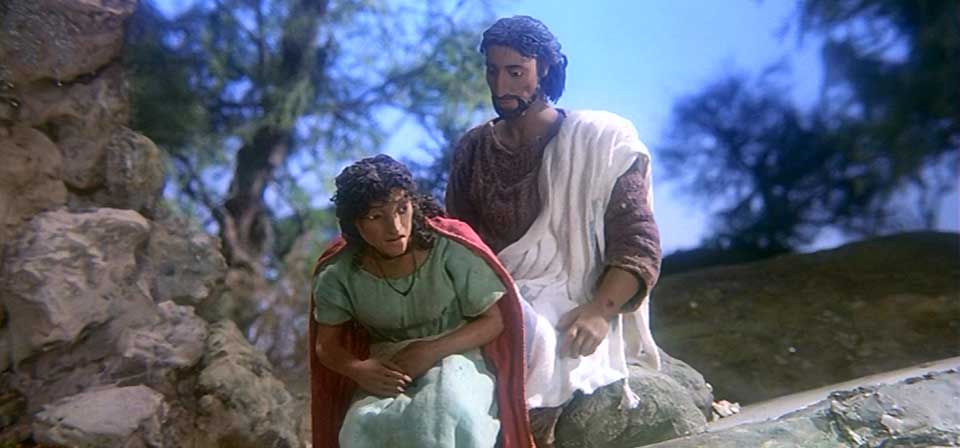
The Miracle Maker (2000)
Fiennes sounds like a man improvising a public speech as he delivers long-familiar words about the house on the rock or the parable of the mustard seed. His Jesus is attractive, composed, commanding, and compassionate; he can rise to righteous anger (as at the cleansing of the temple), but has an acute sense of humor (seen particularly in satirical parables such as the log in the eye).
Joseph: King of Dreams (2000)
Joseph’s own dreams — the two biblical ones plus an extra one — are the best; I caught my breath at the first glimpse of these dreams, which look like living, flowing Van Goghs. The dream-sky swirls like Starry Night, and the grass ripples under the dream-Joseph’s feet like ripples in a pond. The dreamlike quality of these sequences is undeniable and memorable.
Final Fantasy: The Spirits Within (2001)
Based on a computer game, Final Fantasy is always interesting to look at, and is sometimes visually spectacular, but it hasn’t transcended its gaming origins. The sci-fi scavanger-hunt premise hasn’t been fleshed out into a coherent or satisfying story. The heroes, though eye-poppingly rendered, remain emotionally as one-dimensional as any computer-game avatar. Even basic rules and motivations never become clear.
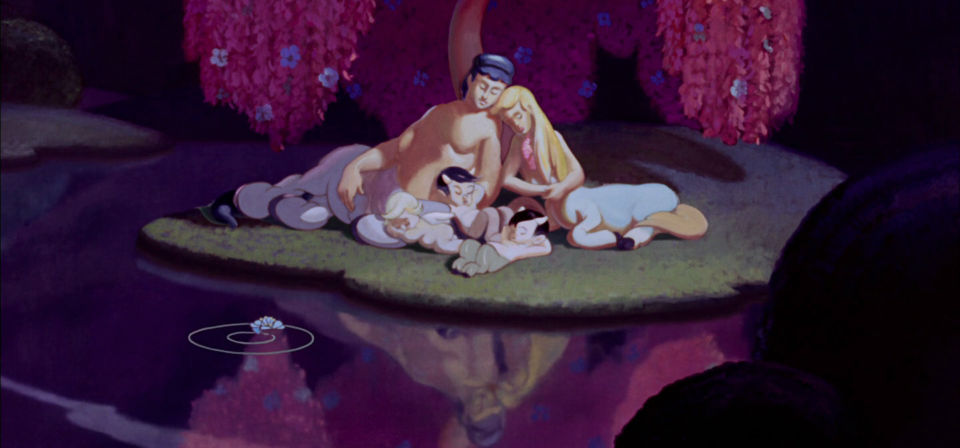
Fantasia (1940)
If Fantasia failed to spark a hoped-for entertainment revolution, its achievement is all the more starkly singular. A joyous experiment in pure animation, an ambitious work of imaginative power, a showcase of cutting-edge technique, and a celebration of great music, it is without precedent and without rival. I’ve watched it far too many times to count, and I have yet to begin tiring of it.
Chicken Run (2000)
Real chickens, I have it on expert testimony, are homebodies who do not actually pine for freedom, as do the heroines of Chicken Run. Whereas these poultry-farm prisoners plot and scheme endlessly to contrive by any means necessary to get under, over, or around their chicken-wire prison wall, my wife’s hens actually perch atop the five-foot fence that surrounds our back yard. They are quite capable of escaping, but have no interest in doing so.
A Bug’s Life (1998)
Pre-DecentFilms capsule review
Atlantis: The Lost Empire (2001)
Directors Gary Trousdale and Kirk Wise (Beauty and the Beast) keep things moving fast enough to keep them from getting boring, and there are a few laughs along the way. Yet what could have made adequate summer entertainment for older kids and parents with low expectations is ultimately undone by pervasive echoes of New-Age pop spirituality and neopaganism in the film’s imagery and themes.
Recent
- Are there too many Jesus movies?
- Antidote to the digital revolution: Carlo Acutis: Roadmap to Reality
- “Not I, But God”: Interview with Carlo Acutis: Roadmap to Reality director Tim Moriarty
- Gunn’s Superman is silly and sincere, and that’s good. It could be smarter.
- Elio is a space adventure that Toy Story’s Andy would actually enjoy
Home Video
Copyright © 2000– Steven D. Greydanus. All rights reserved.